- Grades 6-12
- School Leaders
Don't Forget to Enter Today's Very Merry Giveaway!🎁

80 Best High School Science Experiments and Projects for Every Subject
Fire up the Bunsen burners!

For even more free science ideas and printables, head to our science hub! You’ll find resources in every science subject for middle and high school.
The cool thing about high school is that kids are old enough to tackle some pretty amazing science experiments and projects. Some science experiments for high school are just advanced versions of simpler projects they did when they were younger, with detailed calculations or fewer instructions. Other projects involve fire, chemicals, or other materials they weren’t old enough to use before.
Many of these projects can be used as classroom labs or science fair projects. Feel free to adapt them as needed for students’ individual projects, or use them as full-class activities. However you plan to use the projects, just consider variables that you can change up, like materials or other parameters.
To make it easier to find the right high school science experiment for you, we’ve rated all the projects by difficulty and the materials needed:
Difficulty:
- Easy: Low or no-prep experiments you can do pretty much anytime
- Medium: These take a little more setup or a longer time to complete
- Advanced: Experiments like these take a fairly big commitment of time or effort
- Basic: Simple items you probably already have around the house
- Medium: Items that you might not already have but are easy to get your hands on
- Advanced: These require specialized or more expensive supplies to complete
- Biology and Life Sciences High School Science Fair Projects
- Chemistry High School Science Fair Projects
- Physics High School Science Fair Projects
- Engineering High School Science Fair Projects
Biology and Life Sciences High School Science Fair Projects and Experiments
Explore the living world with these biology science project ideas, learning more about plants, animals, the environment, and much more.
FEATURED TEACHER PICK
Ward’s Science Engage Kit : Cell Cycles
Difficulty: Medium / Materials: Easy (Everything is provided for you!)
In this activity, your students will step into the shoes of an R&D intern at an agricultural biotech company. They’ll dig into a new plant crop virus and brainstorm solutions to tackle it.
Extract DNA from an onion
Difficulty: Medium / Materials: Medium
You don’t need a lot of supplies to perform this experiment, but it’s impressive nonetheless. Turn this into a science fair project by trying it with other fruits and vegetables too.
Make plants move with light
By this age, kids know that many plants move toward sunlight, a process known as phototropism. So high school science fair projects on this topic need to introduce variables into the process, like covering seedling parts with different materials to see the effects.
Test the 5-second rule
We’d all like to know the answer to this one: Is it really safe to eat food you’ve dropped on the floor? Design and conduct an experiment to find out (although we think we might already know the answer).
Find out if color affects taste
Just how interlinked are all our senses? Does the sight of food affect how it tastes? Find out with a fun food science fair project like this one.

See the effects of antibiotics on bacteria
Difficulty: Medium / Materials: Advanced
Bacteria can be divided into two groups: gram-positive and gram-negative. In this experiment, students first determine the two groups, then try the effects of various antibiotics on them.
Buy it: Get a gram stain kit , bacillus cereus and rhodospirillum rubrum cultures, and antibiotic discs from Home Science Tools.
Learn more: Antibiotics Project

Witness the carbon cycle in action
Experiment with the effects of light on the carbon cycle. Make this science fair project even more interesting by adding some small aquatic animals like snails or fish into the mix.
Learn more: Carbon Cycle Lab
Look for cell mitosis in an onion
Cell mitosis (division) is actually easy to see in action when you look at onion root tips under a microscope. Students will be amazed to see science theory become science reality right before their eyes. Adapt this lab into a high school science fair project by applying the process to other organisms too.

Test the effects of disinfectants
Grow bacteria in a petri dish along with paper disks soaked in various antiseptics and disinfectants. You’ll be able to see which ones effectively inhibit bacteria growth.
Learn more: Effectiveness of Antiseptics and Disinfectants
Re-create Mendel’s pea plant experiment
Gregor Mendel’s pea plant experiments were some of the first to explore inherited traits and genetics. Try your own cross-pollination experiments with fast-growing plants like peas or beans.
Pit hydroponics against soil
Growing vegetables without soil (hydroponics) is a popular trend that allows people to garden just about anywhere.

Research soil erosion
Difficulty: Medium / Materials: Basic
Learn about the factors that contribute to soil erosion, and create a demonstration of how soil erosion does and doesn’t occur. Make this more advanced by increasing the number of variables that students investigate and discuss.
Learn more: Soil Erosion Experiment

Difficulty: Easy / Materials: Medium
Growing mold is something that students may have done already, but increase the rigor of this experiment by adding in control variables and turning the experiment on its head to study what might prevent mold growth. Once students know where mold spores are, what should we do about it? How can we prevent mold growth?
Learn more: Growing Mold Experiment
More Life Sciences and Biology Science Fair Projects and Experiments for High School
Use these questions and ideas to design your own experiment:
- What are the most accurate methods of predicting various weather patterns?
- Try out various fertilization methods to find the best and safest way to increase crop yield.
- Does exposure to smoke or other air pollutants affect plant growth?
- Compare the chemical and/or bacterial content of various water sources (bottled, tap, spring, well water, etc.).
- Explore ways to clean up after an oil spill on land or water.
- Conduct a wildlife field survey in a given area and compare it to results from previous surveys.
- Find a new use for plastic bottles or bags to keep them out of landfills.
- Devise a way to desalinate seawater and make it safe to drink.
Chemistry High School Science Fair Projects and Experiments
Bunsen burners, beakers and test tubes, and the possibility of (controlled) explosions? No wonder chemistry experiments are such popular high school science fair projects!

Break apart covalent bonds
Break the covalent bond of H 2 O into H and O with this simple experiment. You only need simple supplies for this one. Turn it into a science fair project by changing up the variables—does the temperature of the water matter? What happens if you try this with other liquids?
Learn more: Covalent Bonds
Measure the calories in various foods
Are the calorie counts on your favorite snacks accurate? Build your own calorimeter and find out! This kit from Home Science Tools has all the supplies you’ll need.

Detect latent fingerprints
Forensic science is engrossing and can lead to important career opportunities too. Explore the chemistry needed to detect latent (invisible) fingerprints, just like they do for crime scenes!
Learn more: Fingerprint Science Fair Project
Use Alka-Seltzer to explore reaction rate
Difficulty: Easy / Materials: Basic
Tweak this basic concept to create a variety of high school chemistry science fair projects. Change the temperature, surface area, pressure, and more to see how reaction rates change.
Determine whether sports drinks provide more electrolytes than OJ
Are those pricey sports drinks really worth it? Try this experiment to find out. You’ll need some special equipment for this one.
Buy it: Electrolyte Test Kit at Home Science Tools
Turn flames into a rainbow
You’ll need to get your hands on a few different chemicals for this experiment, but the wow factor will make it worth the effort! Make it a science project by seeing if different materials, air temperature, or other factors change the results.

Discover the size of a mole
The mole is a key concept in chemistry, so it’s important to ensure students really understand it. This experiment uses simple materials like salt and chalk to make an abstract concept more concrete. Make it a project by applying the same procedure to a variety of substances, or determining whether outside variables have an effect on the results.
Learn more: Chemistry Lab: How Big Is a Mole?

Cook up candy to learn molecule calculations
Students make rock candy while learning about chemical reactions and calculations. If they change any of the reactions or amounts, what happens?
Learn more: Rock Candy Experiment

Make soap to understand saponification
Take a closer look at an everyday item: soap! Use oils and other ingredients to make your own soap, learning about esters and saponification. Tinker with the formula to find one that fits a particular set of parameters.
Learn more: Soap Making
Uncover the secrets of evaporation
Explore the factors that affect evaporation, then come up with ways to slow them down or speed them up for a simple science fair project.
Learn more: Evaporation at Science Project
Dancing popcorn
Another way to show a chemical reaction is the dancing popcorn experiment. This video shows two ways to conduct the reaction. Students can explain the science behind each.
Learn more: Dancing Popcorn Experiment
Egg & Vinegar Experiment
Show how vinegar can take the shell off an egg with this experiment. Students can show this experiment in various stages, and talk about what’s happening at the molecular level.
Learn more: Egg and Vinegar Experiment
Make a lava lamp
Show a chemical reaction with a lava lamp. This is a great experiment to do at science fairs that have a lot of younger siblings who will be excited to see the experiment come to life.

Cabbage pH experiment
Explain pH using cabbage water and some other household items. Students can set up a pH demonstration and be ready to explain how pH works.
Learn more: Cabbage pH Experiment
Buy it: pH Test Strips at Amazon

Split water
Show how water splits into hydrogen and water in this easy experiment. Make it more complicated by adding pH or adding snap circuits to focus on electricity.
Learn more: Electrolysis of Water Lab
More Chemistry Science Fair Projects and Experiments for High School
These questions and ideas can spark ideas for a unique experiment:
- Compare the properties of sugar and artificial sweeteners.
- Explore the impact of temperature, concentration, and seeding on crystal growth.
- Test various antacids on the market to find the most effective product.
- What is the optimum temperature for yeast production when baking bread from scratch?
- Compare the vitamin C content of various fruits and vegetables.
- How does temperature affect enzyme-catalyzed reactions?
- Investigate the effects of pH on an acid-base chemical reaction.
- What’s the best way to slow down metal oxidation (form of rust)?
- How do changes in ingredients and method affect the results of a baking recipe?
Physics High School Science Fair Projects and Experiments
When you think of physics science projects for high school, the first thing that comes to mind is probably the classic build-a-bridge. But there are plenty of other ways for teens to get hands-on with physics concepts. Here are some high school science experiments to try.
Remove the air in a DIY vacuum chamber
You can use a vacuum chamber to do lots of cool high school science fair projects, but a ready-made one can be expensive. Try this project to make your own with basic supplies.
Put together a mini Tesla coil
Looking for a simple but showy high school science fair project? Build your own mini Tesla coil and wow the crowd!
Boil water in a paper cup
Logic tells us we shouldn’t set a paper cup over a heat source, right? Yet it’s actually possible to boil water in a paper cup without burning the cup up! Learn about heat transfer and thermal conductivity with this experiment. Go deeper by trying other liquids like honey to see what happens.
Build a better light bulb
Emulate Thomas Edison and build your own simple light bulb. You can turn this into a science fair project by experimenting with different types of materials for filaments.
Measure the speed of light—with your microwave
Grab an egg and head to your microwave for this surprisingly simple experiment. By measuring the distance between cooked portions of egg whites, you’ll be able to calculate the wavelength of the microwaves in your oven and, in turn, the speed of light.

Generate a Lichtenberg figure
See electricity in action when you generate and capture a Lichtenberg figure with polyethylene sheets, wood, or even acrylic and toner. Change the electrical intensity and materials to see what types of patterns you can create.
Learn more: Make a Lichtenberg Figure
Explore the power of friction with sticky-note pads
Ever try to pull a piece of paper out of the middle of a big stack? It’s harder than you’d think! That’s due to the power of friction. In this experiment, students interleave the sheets of two sticky-note pads, then measure how much weight it takes to pull them apart. The results are astonishing!
Build a cloud chamber to prove background radiation
Ready to dip your toe into particle physics? Learn about background radiation and build a cloud chamber to prove the existence of muons.

Measure the effect of temperature on resistance
This is a popular and classic science fair experiment in physics. You’ll need a few specialized supplies, but they’re pretty easy to find.
Learn more: Effect of Temperature on Resistance
Launch a bottle rocket
A basic bottle rocket is pretty easy to build, but it opens the door to lots of different science fair projects. Design a powerful launcher, alter the rocket so it flies higher or farther, or use only recycled materials for your flyer.
Make a solar oven
Model how solar heating works with a solar oven. Students can make this experiment high-school-worthy by testing different types of oven designs, measuring the temperature inside, or determining how much more efficient the solar oven is than a microwave or conventional oven.
Learn more: Solar Oven Science Project

Soundproof a box
Students experiment with acoustics and soundproofing to create a space that’s soundproofed. This would be a major challenge for a high schooler who has to block out the sounds at a busy science fair.
Learn more: Soundproofing STEM Activity
More Physics Science Fair Projects and Experiments for High School
Design your own experiment in response to these questions and prompts.
- What’s the best way to eliminate friction between two objects?
- Explore the best methods of insulating an object against heat loss.
- What effect does temperature have on batteries when stored for long periods of time?
- Test the effects of magnets or electromagnetic fields on plants or other living organisms.
- Determine the best angle and speed of a bat swing in baseball.
- Explore methods for reducing air resistance in automotive design.
- Use the concepts of torque and rotation to perfect a golf swing.
- Compare the strength and durability of various building materials.
Engineering High School Science Fair Projects and Experiments
Many schools are changing up their science fairs to STEM fairs to encourage students with an interest in engineering to participate. Many great engineering science experiments for high school start with a STEM challenge, like those shown here. Use these ideas to spark a full-blown project to build something new and amazing!

Construct a model maglev train
Maglev trains may just be the future of mass transportation. Students can build a model at home and explore ways to implement the technology on a wider basis.
Learn more: Maglev Model Train
Design a more efficient wind turbine
Wind energy is renewable, making it a good solution for the fossil fuel problem. For a smart science fair project, experiment to find the most efficient wind turbine design for a given situation.

Re-create Da Vinci’s flying machine
Da Vinci sketched several models of “flying machines” and hoped to soar through the sky. Do some research into his models and try to reconstruct one of your own.
Learn more: Leonardo Da Vinci’s Flying Machine
Design a heart-rate monitor
Smartwatches are ubiquitous these days, so pretty much anyone can wear a heart-rate monitor on their wrist. But do they work any better than one you can build yourself? Get the specialized items you need, like the Arduino LilyPad Board , on Amazon.
Create cars and race them using balloons or this baking soda experiment. Add more complexity by having students create their cars using 3D printer technology.
Learn more: Baking Soda and Vinegar Balloon Experiment

Grow veggies in a hydroponic garden
Hydroponics is the gardening wave of the future, making it easy to grow plants anywhere with minimal soil required. For a science fair STEM engineering challenge, design and construct your own hydroponic garden capable of growing vegetables to feed a family. This model is just one possible option.
Learn more: Vertical Hydroponic Farm
Grab items with a mechanical claw
Delve into robotics with this engineering project. This kit includes all the materials you need, with complete video instructions. Once you’ve built the basic structure, tinker around with the design to improve its strength, accuracy, or other traits.

Construct a crystal radio
Return to the good old days and build a radio from scratch. This makes a cool science fair project if you experiment with different types of materials for the antenna.
Learn more: Crystal Radio
Buy it: Crystal Radio Kit at Home Science Tools

Build a paper bridge
Bridge building is a fun STEM activity that can be made more or less challenging depending on the ultimate goal. The more functional the bridge has to be, the more difficult the project.
Learn more: Paper Bridge Project

Potato battery
Make, test, and showcase a potato battery. The process is simple enough, so students can figure out just how much power their potato has and what they can do with their battery.
Learn more: Potato Battery

Marble roller coaster
Another fun project that high schoolers can revisit now that they know more about physics and engineering is the roller coaster. Students make a roller coaster for a small car or marble.
Learn more: Paper Roller Coaster
Check out even more ready-to-go science kits for hands-on learning your students will love
Ward’s Science Engage Kits are an amazing way to bring more inquiry-based activities into your classroom. The kits come with everything you need to complete hands-on labs with your class. Your students will develop their critical questioning, research, and teamwork skills while working to solve problems that feel real and important.
Looking for more science content? Check out the Best Science Websites for Middle and High School .
Plus, get all the latest teaching tips and tricks when you sign up for our newsletters .
Copyright © 2024. All rights reserved. 5335 Gate Parkway, Jacksonville, FL 32256
All Science Fair Projects
1000 science fair projects with complete instructions.

105 Science Fair Projects for High School
Looking for inspiring high school science fair project ideas? You're at the right place, as we compiled this wide range of science projects for 9th grade, 10th grade, 11th grade and 12th grade!
High School Science Fair Project FAQ
What are some easy high school science fair projects.
High school students can have a blast with science by trying out any of these easy science fair projects. These science fair projects teach important scientific concepts while making learning fun and enjoyable.
Growing Pineapples
Osmosis in Eggs
The Effects of Salt and Sugar on Water
Detecting Infrared Light
Solar System Scale Model on the Sidewalk
Temperature's Effect on Seawater
Decomposing Plastic Spoons
Color and Taste
Glowing in the Dark
Hand-Eye Coordination and Age
More details on these science fair projects right above the FAQ!
What is the best high school science project ever?
We highly recommend the Osmosis in Eggs science fair project for high school students. This experiment demonstrates how water moves through a membrane until it's balanced on both sides. By testing how different factors like salt, sugar, and temperature affect osmosis, you can learn more about this fascinating process and its real-life applications.
If you're looking for more high school science projects, check out the high school science fair projects at the top of this page!
Check out more Best Science Fair Projects →

What are some cool high school grade science fair projects?
Get ready to be amazed by these super cool science projects for high schoolers! With just a few simple things, you can be fascinated by science and have tons of fun with these cool high school science projects!
Create a Hand-Drawn Hologram
Galileo's Inclined Plane Experiment
Are Dogs Color-Blind?
Plant Pavlovian Conditioning
Uncovering Chaos: Precision and Iterative Processes
Jet Lag in Hamsters
What are 5 testable questions for high school?
A testable question is a question that we can answer through a science experiment. To do this, we do a control science experiment, then we change one thing in the experiment to see how it affects what happens. This is how we can discover the answer to our question!
Do detergents affect plant growth?
Can drink and food taste different just by changing its color?
Does the color of light affect photosynthesis?
Does temperature affect seed sprouting?
What makes popcorn pop?
Here are more testable questions along with their science projects →
What are the top 10 science projects for high school?
These are our top 10 science projects for high school, with projects from Biology, Chemistry, Physics and Math. These projects can be used as science fair project ideas or as a fun experiment to explore different areas of science!
Check out the project details right above the FAQ!
Can I do a high school science fair project in a day?
Yes! Doing quick experiments or building models are great options for science fair projects! If you're looking for some ideas to get started on your quick science fair project, we have plenty of topics to choose from.
The Solar System: See it in the correct scale!
Create your own solar system model to scale on the sidewalk and take a walk through space! Solar System Scale Model on the Sidewalk
Make Your Own Hologram!
Make a hologram with nothing more than a compass and some scraps of plexiglass! Create a Hand-Drawn Hologram
Finding the Invisible Light!
Have you ever wondered what kind of light we can't see? Detecting Infrared Light
What are some hands-on ways to find inspiration for my science fair project?
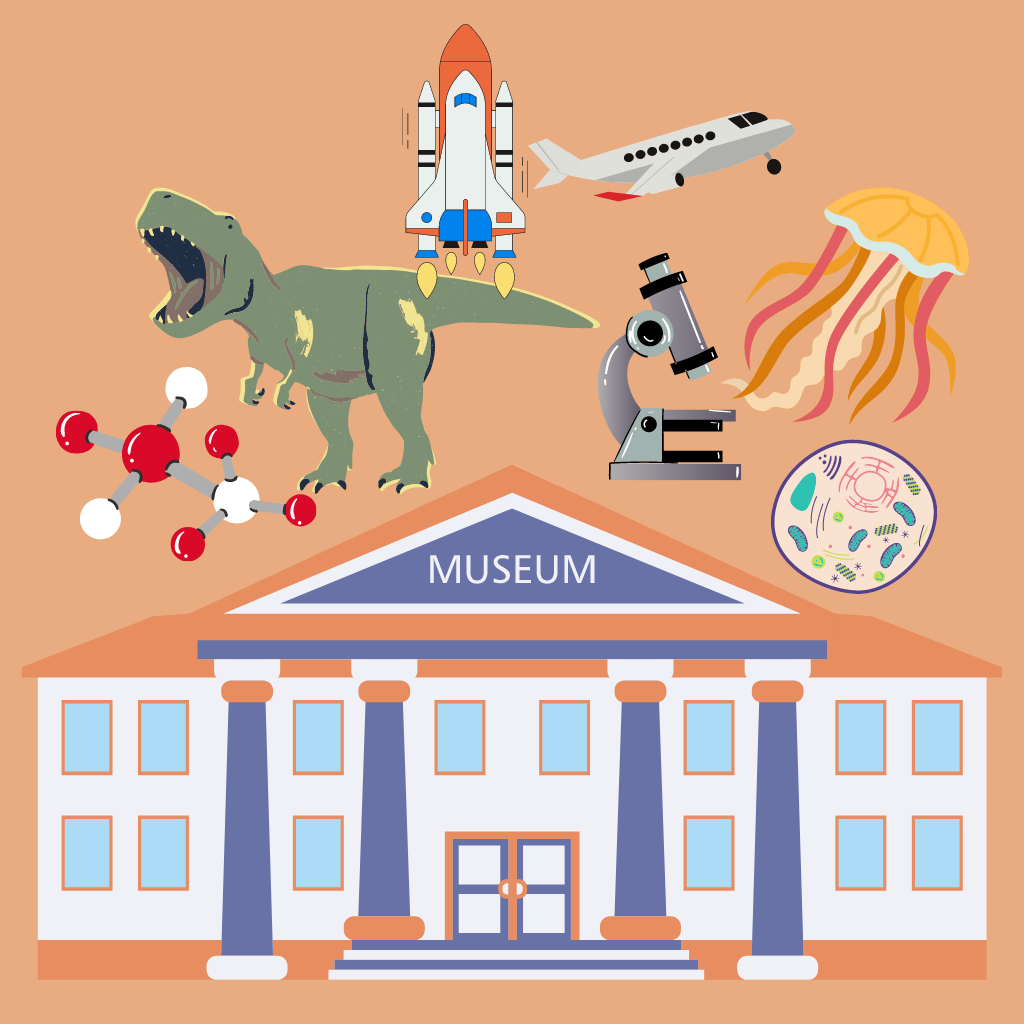
There may be free admission days or free passes to a science museum near you! Check your local library for free museum passes, nearby science museums for free entrance days and your credit card for offers.
Find a science museum near you and prepare to be awed by all that you can learn there! I always learn something new and am inspired whenever I go to a science museum!
How do I start a science fair project?
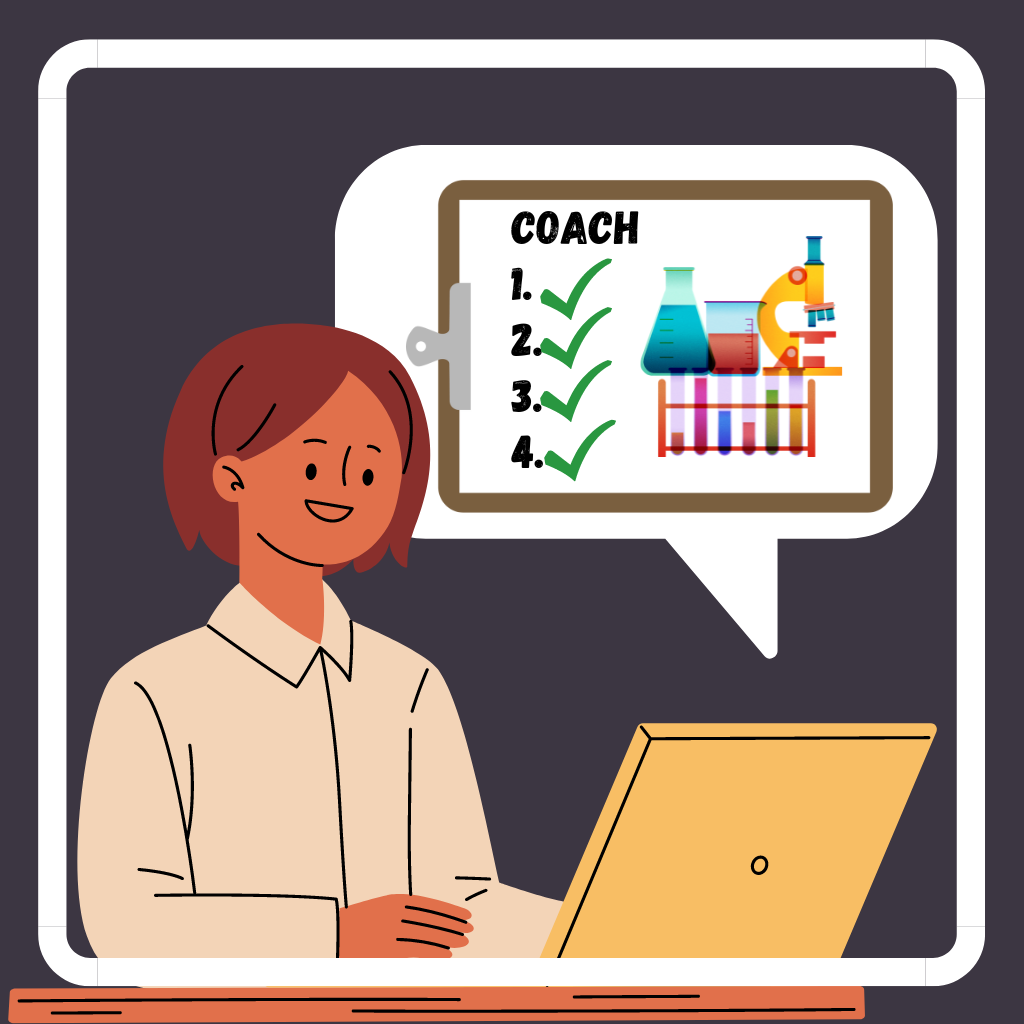
What should I do after I have a science fair project idea?

How do I make a science fair board?
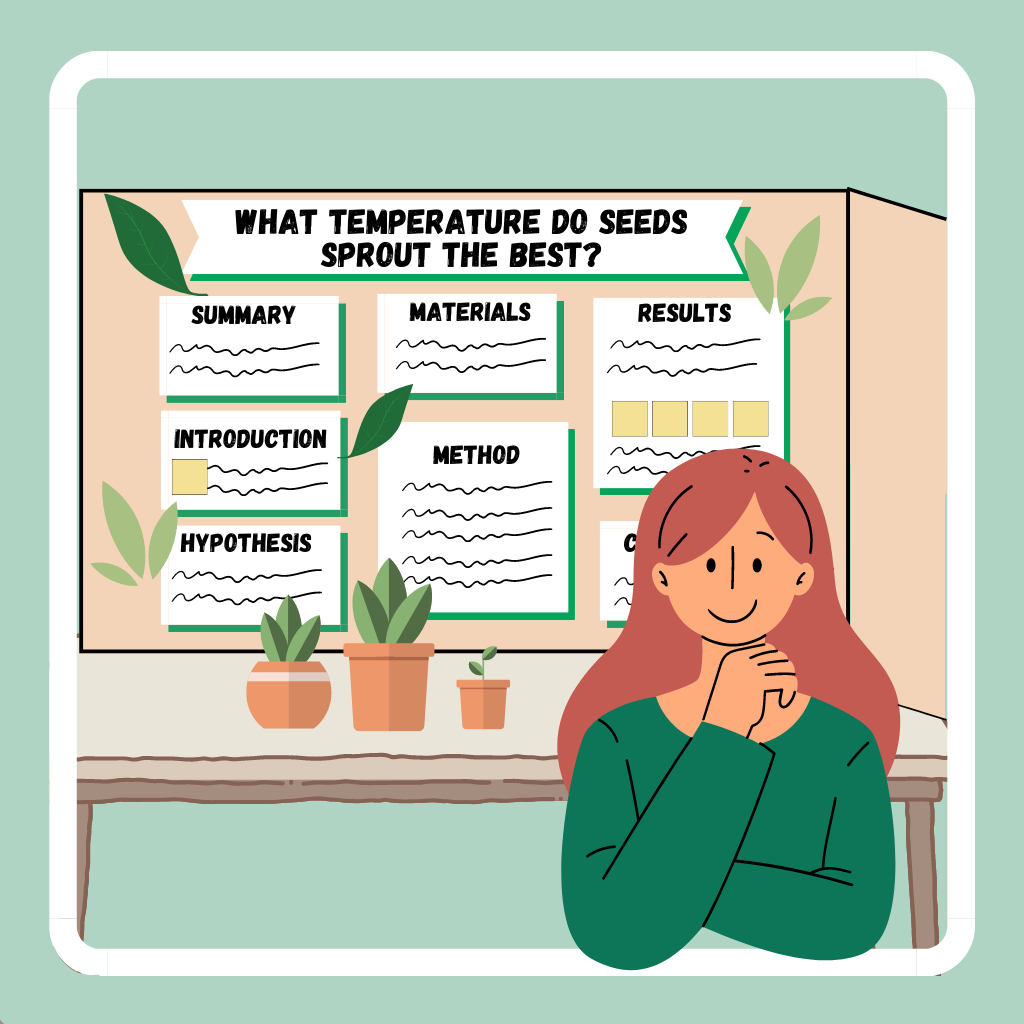
What is the scientific method?
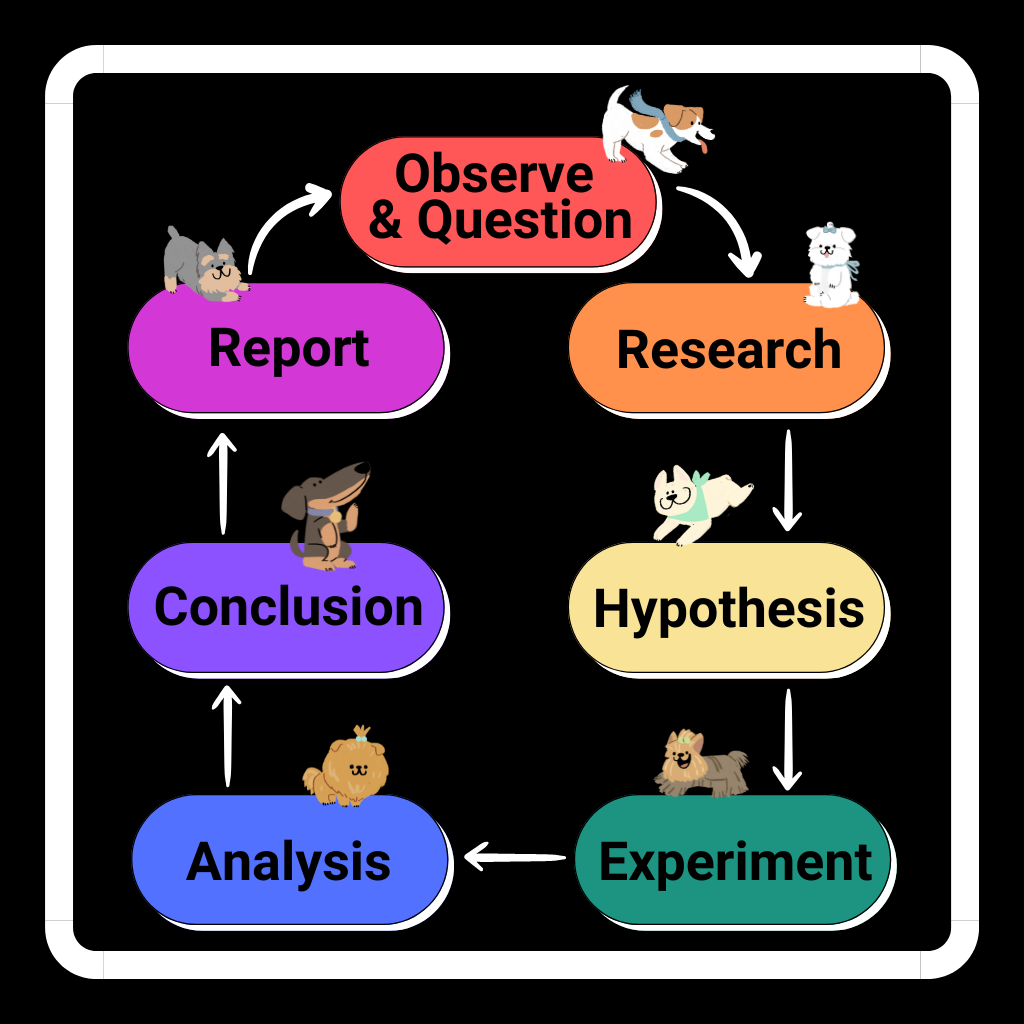
What is the engineering design process?
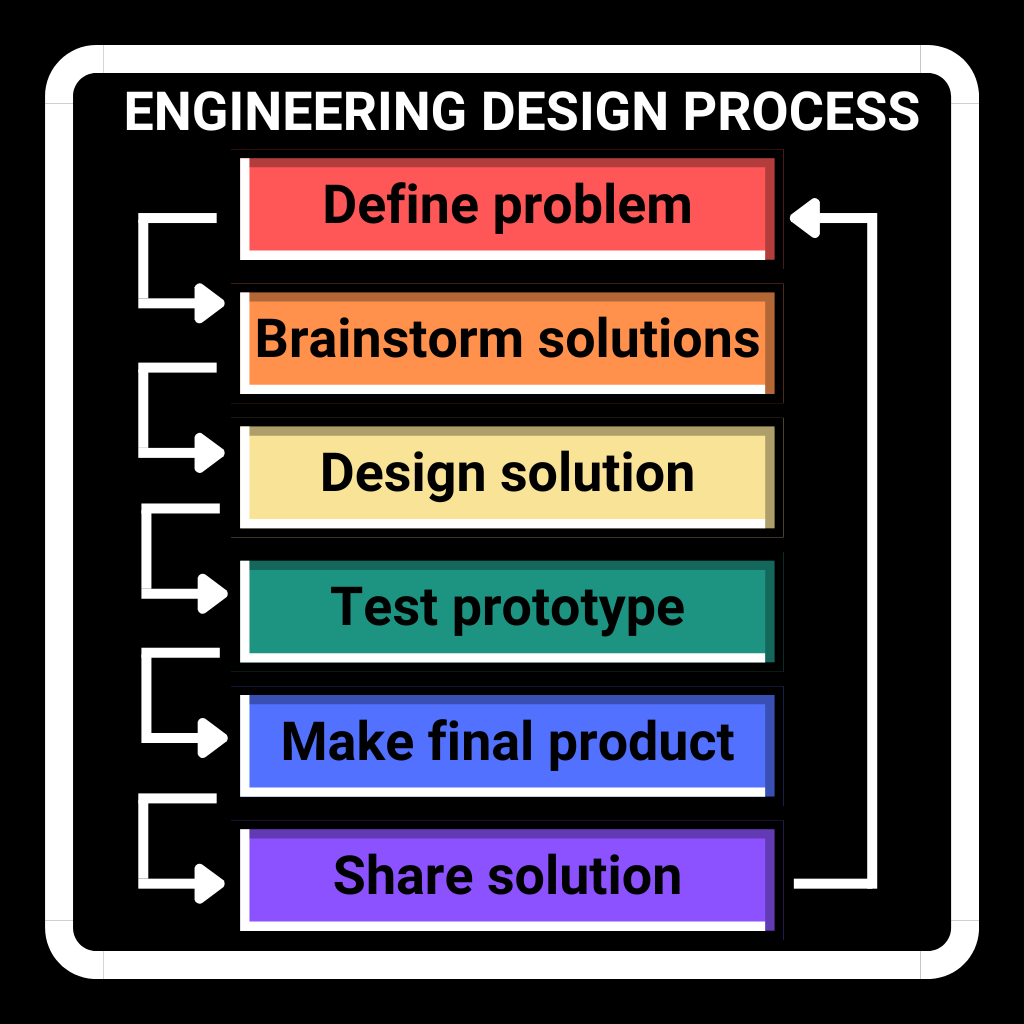
Where can I find a science fair competition?
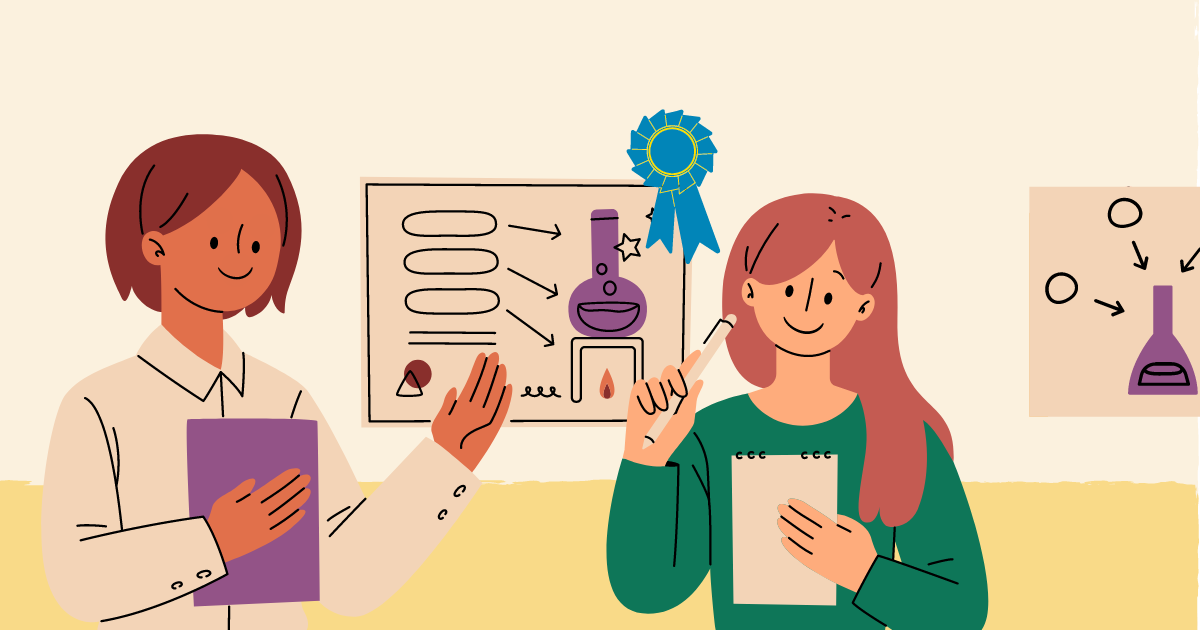
The www Virtual Library: Science Fairs website also has a collection of science fairs from all over the world, as well as national, state, regional, local, and virtual competitions!

100+ High School Science Fair Projects: Award-Winning Science Fair Project Topics for High Schoolers
High school science fairs offer students the opportunity to explore their interests in the sciences, engage in research, and develop critical thinking and problem-solving skills. With so many potential areas of focus and scientific questions to explore, it can be difficult to know where to begin. That's why we've put together a comprehensive list of over 100 high school science fair projects to inspire and guide students on their scientific journeys.
From biology to chemistry, physics to earth sciences, this list includes a wide range of topics and project ideas suitable for high school students of all levels. So whether you're just starting to brainstorm ideas or you're ready to dive into a project, we hope this list will provide you with the inspiration and guidance you need to create a successful and engaging science fair project.
You may also be interested in this blog post on High School Science Fair Projects.
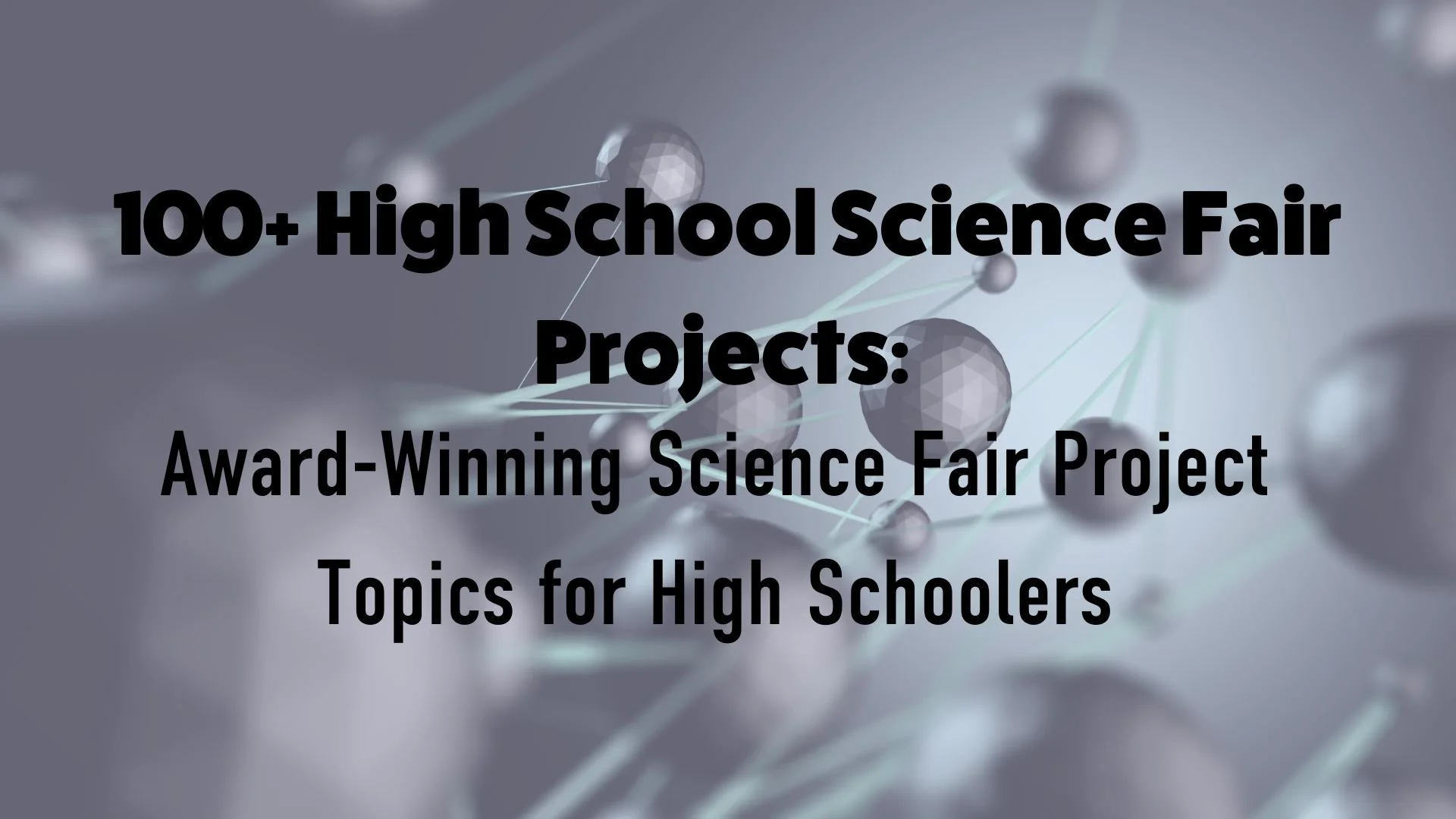
High School Science Fair Project Ideas, Organized by Subject
Life science.
Compare the effect of antibiotics on gram-positive and gram-negative bacteria. (Grow your own cultures with agar & Petri dishes. For a sample procedure and more project ideas, see our bacteria science project guide.)
Run a bioassay to test for toxicity in water or soil.
Test the effect of ultraviolet radiation on bacteria growth.
Do different types of bread grow different types of mold? Does temperature or light affect mold growth?
Experiment with plant genetics (plant hybrids, cross-breeding).
Test factors like smoke or pollution that might affect transpiration rates for plants.
Investigate the effects of increased oxygen or carbon dioxide concentration on plant germination.
Find out the differences in properties and effects of organic vs. chemical fertilizers.
Earth Science
Explore methods of erosion prevention, and test the effects of different soil compositions on erosion (e.g. how does more clay compare to more sand?).
Experiment with methods of flood management and containment.
Investigate the effects of sunspots on weather patterns.
Work with methods for forecasting weather.
Test the concentration and effect of minerals and pH in soil and water samples. (Use water test strips and a soil analyzer.)
Determine the chemical makeup of rain in your area; test possible hazardous effects.
Physical Science
Study acoustic models and methods of noise control. (A sound measurement kit/ might be helpful.)
Experiment with the effect of storage temperatures on batteries.
Develop improvements in battery chargers; try using solar cells to recharge batteries.
Compare the bending strength and durability of different building materials.
Build a potato-powered battery.
Experiment with building materials that are fire-preventative.
Design industrial uses of magnets; test the effects of magnetic and electromagnetic fields on living organisms such as brine shrimp.
Design a project in advanced robotic programming.
Build a sensor-moving advanced bristle bot robot.
Test the effects of a solution's pH level on iron and copper corrosion; explore different corrosion prevention methods.
Experiment with types, effectiveness, and impact on the nutritional value of preservatives in food.
Compare the properties and effects of artificial sweeteners vs. sugar or other natural sweeteners. (For this and the following tests, you might consider the Chemistry of Food kit.)
Test the chemical properties and physiological impact of saturated, unsaturated, and trans fats.
Use indophenol to test the effect of different cooking methods on the depletion of vitamin C in food.
Investigate the role of enzymes and yeast in the fermentation or cheese-making process.
Experiment with different methods of water filtration/purification (such as solar distillation).
Analyze the by-products of gasoline; compare the efficiency of various octane levels.
Conduct an orange juice titration demonstration
Environmental Science
Compare or develop hydrogen production and storage methods for use in fuel cells.
Investigate methods of improving home insulation.
Experiment with expanded uses of solar energy.
Test methods for cleaning up and neutralizing the effect of oil in salt water with this oil spill cleanup kit.
Work with methods of processing/recycling non-biodegradable items; experiment with decomposition aids.
Experiment with the design and function of wind turbines or water wheels.
Test for harmful effects of pesticides; test or develop natural/organic alternatives; test the effectiveness of common pesticides such as DEET.
Which type and color of roofing material provides the most energy efficiency?
Download our College Admissions Report and learn how 400+ Inspirit AI Scholars got accepted to Ivy League Schools in the past 2 years!
Previous award-winning high school science fair projects, organized by grade.
For an even more comprehensive high school science fair projects, check out the examples below of award-winning topics in each grade level.
Noninvasive Blood Glucose Concentration Monitoring via Interferometry and Thermal Technology
Making the road safer with Computer Vision Algorithms
Using Carbon-Coated Sea Shells for the Filtration of Lead-Contaminated Water
Increasing Blast and Impact Resistance of Reinforced Concrete Buildings
Mimicking fruit fly response patterns for threat evasion of airborne machines
Enzymatic Hydrolysis of Cellulose and Production of Cellulosic Ethanol
Improving hearing loss with tactile sound
The effect of current and filtration on hydrogen production in seawater electrolysis
Determination of Bisphenol A (BPA) in Consumer Products in the Ottawa Region
Are dandelions able to inhibit bacterial growth and have other health benefits?
The Chances of Guessing Correctly on a Multiple-Choice Exam
A molecular, chemical, and genetic assessment on the diversity of 16 faba bean lines.
Stem Cells: usage, advantages, and controversy
CANDU (Canada Deuterium Uranium) nuclear power generator
Canadian petroleum industry and its impact on the environment
Multiple vs. the torque of a horizontal axis windmill.
Multiple rotors vs. electrical energy output of a horizontal axis windmill.
Geothermal energy efficiency and negative effects on the environment.
Effects of the temperature of a PEM fuel cell and electrolyzer system
Construct a device for detecting black ice for blind people.
Will a structure with a crossbeam support more mass than the structure without it?
Development of an Embedded 3D Robot Visual System
Object Recognition using a scanner, web camera, etc., and a VB6 computer program
The use different types of digital media as the cover mediums for Steganographic purposes
Patient's medical information encoded into ultrasound, CT and MRI images
Which is more stronger: plexiglass or glass?
Test the effectiveness of antibacterial substances on E. coli.
Test water for pH, dissolved oxygen, nitrate, phosphates, coliform bacteria, iron and hardness
The Human Genome Project (HGP): key factors and scientists involved
Which medium results in effective mould growth? Synthetic, semi-synthetic or natural?
Averrhoa Bilimbi - A Natural Coagulant For Rubber Latex
A convolutional neural network based approach to plant disease diagnosis
Enhance fishermen safety and productivity by use of GPS
Combatting drought with orange peels
Creating a simple diagnostic tool for earlier detection of cardiac disease
Combating the global food crisis: Diazotroph Bacteria as a Cereal Crop Growth Promoter
A flashlight that runs solely on the heat of the human hand
Catch, identify and count insects in a greenhouses in order to determine a control strategy.
An Automated Cereal Dispenser for Disabled People
Polar Bear Protection: Population, Predictions, Predicaments
Investigate why the common household mold causes asthma
What is a prime number?
Mycorrhizal inoculated soybean plants as a means of phytoremediation
Generate electricity from car shock absorbers.
Fighting Ascochyta Blight of Chickpea
Biofixation of CO2 Using Coccolithophorid Algae
Determine if San Carlos has enough wind speed to support wind powered generators.
How much wind velocity do we need to generate power (light a LED)?
Ethanol Based Jatropha Biodiesel
Evaluate a fuel mixture of Ethanol and Hydrogen Peroxide
Ethanol produced by fermenting waste materials.
Describe alternative energy sources and outline advantages and disadvantages of any source.
Improving Binocular Vision in Stereopsis Impairment Using Optical Devices
Investigate the science of aviation and flight
Experiment with Biefield-Brown Lifters
Explore the technology behind different power sources
Research the basics of cloning: history, science and scientists
The Best Detergent for Plentiful DNA Extraction
Explore the effect of the lunar phase on events on Earth - temperature and birth rates.
How to Harvest Tree Vibrations Energy
Will educating about organ donation have impact on intent for organ donation?
A natural anti-bacterial solution using rainwater and persimmon calyx
Analysis of Rocket Guidance Systems to Enhance Space Flight Maneuverability
Biodegrading Naphthenic Acids using Sand Bioreactors in Bitumen Extraction from Oil Sands
Computer-aided Discovery of Novel Influenza Endonuclease Inhibitors to Combat Flu Pandemic
Novel Antibiotics in mango ginger (Curcuma amada)
Sand filters and the biodegradation of toxic naphthenic acids in tailings ponds
Creating a facility for farming on the planet Mars
Free Energy: The Science of Perpetual Motion Machines
Global Neural Network Cloud Service for Breast Cancer Diagnosis
Controlling Food Intake Speed with Electronic Circuitry
Neem tree extracts as antibacterial, antifungal and pesticidal agents
Establish a natural substance for teeth whitening
Should antioxidants like vitamin E, be administered along with edelfosine to cancer patients?
The use of a webcam visual system for trajectory estimation
Zinc Phytoremediation with the Indian Mustard
Increase wind velocity by creating a hole in an airfoil
An innovative passive high-precision photovoltaic panel tracking system
The invasive nature of smooth brome and creeping thistle
Study of tropospheric ozone using OSIRIS and TOMS data.
Compare the gaming performance of six different graphic cards
A Dynamic Analog Concurrently-Processed Adaptive Neural Network Chip
Show that soybean chemiluminescence levels can be altered by an oxidizing agent
Test if adding ash to paint will enhance its fire-extinguishing characteristics
Is the Monarch butterfly put at risk from the pollen of Bt corn (GMO)
The development of a plant-based vaccine against SARS-CoV
Test the Effect of Grapefruit Juice on Anti-Cholesterol Drugs
Circadian rhythms in Russian giant sunflowers
The effects of plant regulators (auxins and cytokinins) on different tomato genotypes
Early Detection of Pancreatic Cancer through Competitive Lateral-flow Assays and Deep Learning.
Optimizing environmental DNA detection methods while analyzing the presence of river otters
Cheap production of nitrogen pesticides and fertilizers through hydrolysis of plant protein
Simple chemiresistor-based alkane sensor to detect lung cancer from the exhaled breath
Morphological Identification of Wide-Separation Gravitationally Lensed Quasars
Portable elemental analysis system for heavy metal contamination detection in soil samples
Determine the mechanism by which cancer cells resist cisplatin
Investigate ways to prolong the operational lifespan of dye sensitized solar cells (DSSCs)
Biogas production from jatropha seed cake and cow dung
Study the basic theory of combinatorial games using the game of Nim as an example
Moon Helium-3 Energy That Could Be Beamed Back to the Earth
Remediation of persistent hydrocarbon compounds
Extracting Energy From Phase Shift in Water
Build a walking robot
An efficient method for performing real-time object tracking
A robot that can tell where objects are (map-building)
The use of a potentiometer led for a conceptual human-robotic interface.
Distributed Robotics: An Intelligent System
Finding a practical mathematical function for f(x) with genetic algorithms.
A deterministic computer simulator for PRT (Personal Rapid Transit) networks
A computer program that simulates Newtonian physics
How does extracellular pH affect the genetic transformation of calcium treated E. coli
The effect of soil salt stress on plant health, plant ethylene and ABA production.
About Inspirit AI
AI Scholars Live Online is a 10 session (25-hour) program that exposes high school students to fundamental AI concepts and guides them to build a socially impactful project. Taught by our team of graduate students from Stanford, MIT, and more, students receive a personalized learning experience in small groups with a student-teacher ratio of 5:1.
By Shashank K., Inspirit AI Ambassador
How to Get Started with a Chemistry Science Fair Project
Best science fair projects: a guide to choose the right fit for you.

30 Best Science Experiments & Projects for High School
Welcome to our round-up of top science fair projects and science experiments tailored specifically for curious high school students.
Science fair is not just about the glitz and glamour of a first-place trophy; it’s about the passion, the inquiry, and the insatiable curiosity that drive every scientist, young and old. Hopefully, our curated list of the best hands-on science fair projects for high school students will ignite that curiosity in you.
Each project on this list offers a unique opportunity to dive deep into scientific inquiry and present findings with both clarity and flair.
Let’s dive in and make learning an unforgettable adventure!
1. Burn Calories
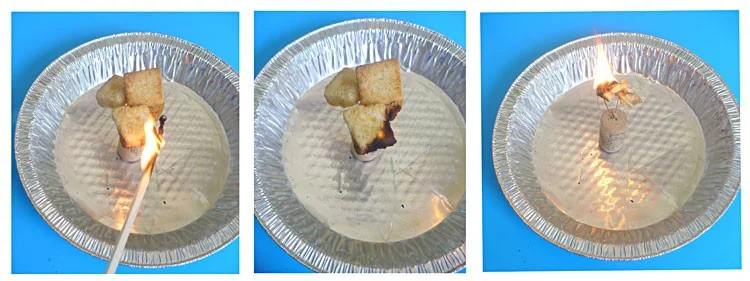
Don’t miss this opportunity to unravel the mysteries of energy transformation and uncover the scientific secrets hidden in the simplest of substances!
Learn more: Science Buddies
2. Extracting DNA from Strawberry
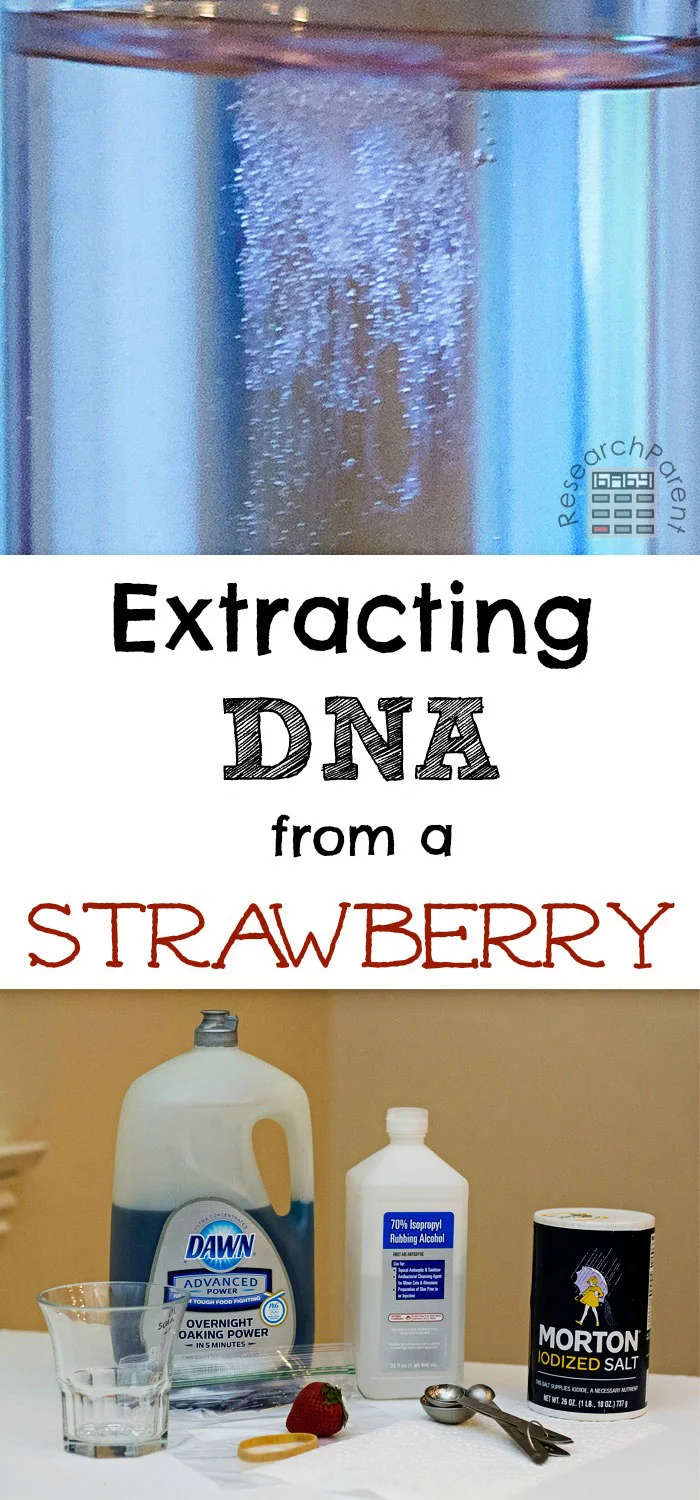
By following a series of simple yet insightful steps, students will witness the magical moment of DNA extraction, fostering a deeper appreciation for the fundamental building blocks of life.
Learn more: Extracting DNA from Strawberry
3. Build a Simple DIY Newton’s Cradle
As students assemble the materials and witness the rhythmic dance of swinging spheres, they will witness the scientific principles they’ve learned in the classroom come to life before their eyes.
4. Make a Monster Dry Ice Bubbles
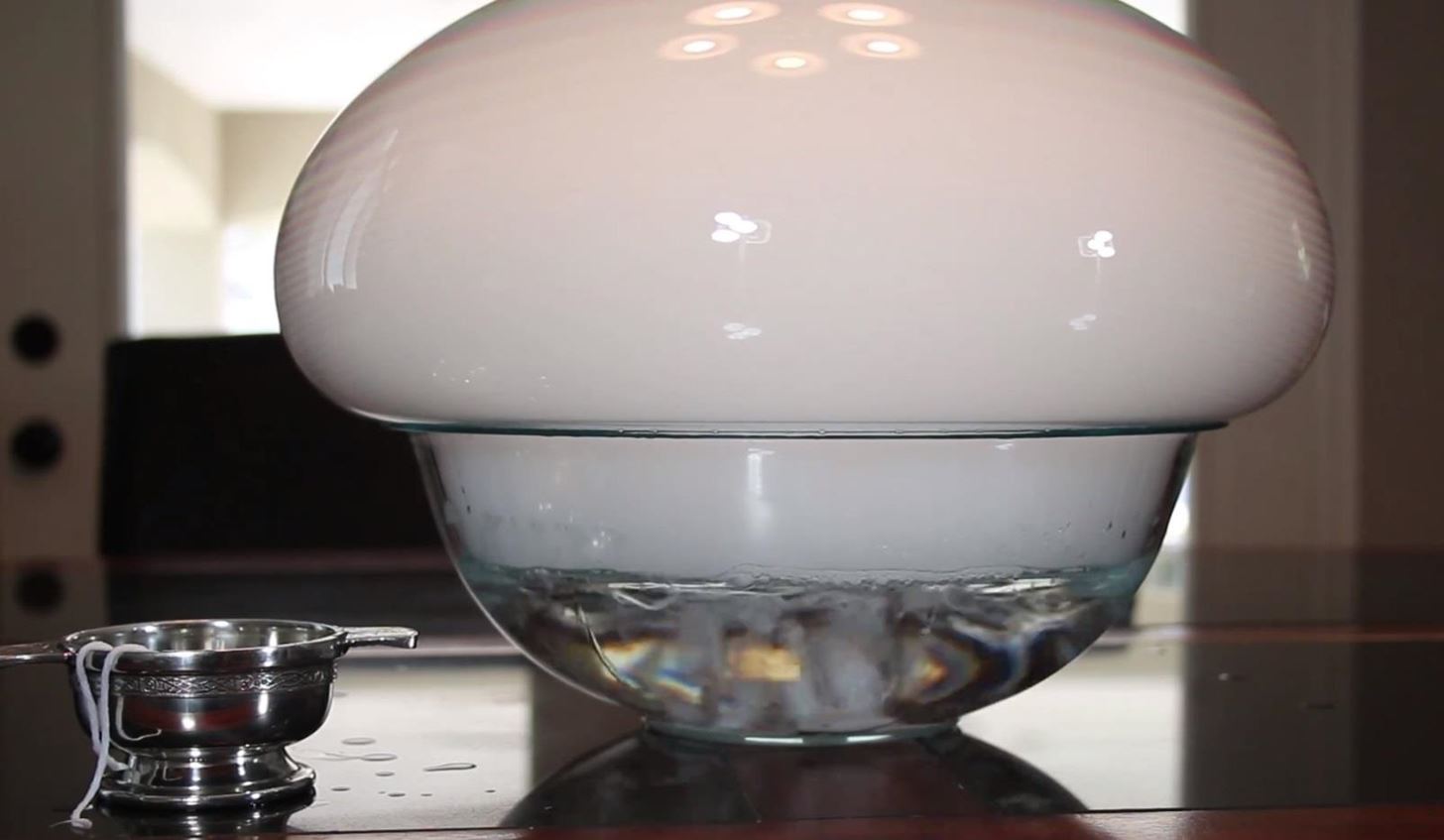
Unleash your inner mad scientist and learn how to make Monster Dry Ice Bubbles with this high school science experiment!
Get ready to be captivated as you create giant, spooky bubbles that dance and swirl with the mysterious power of dry ice.
Learn more: Wonder How To
5. Soil Erosion Experiment
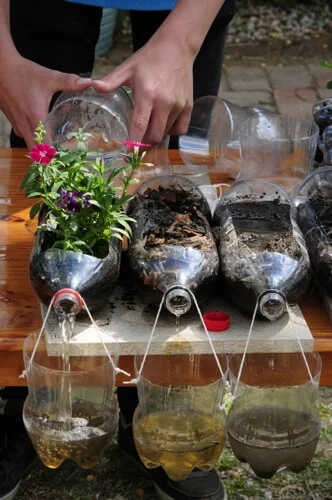
As stewards of our environment, it’s crucial to comprehend the impact of natural processes like soil erosion.
Through this experiment, students will gain a deeper appreciation for the significance of soil conservation and sustainable land management practices.
Learn more: Life is a Garden
6. Candle Carousel
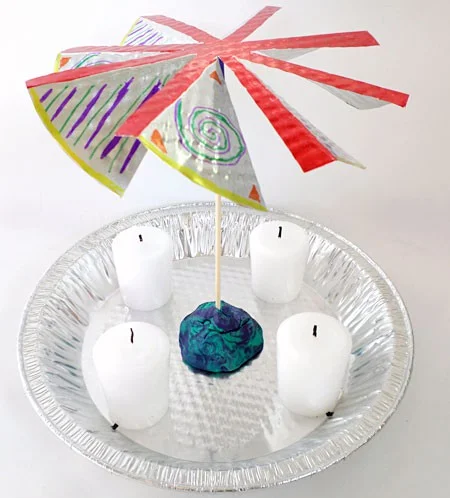
This experiment combines the wonders of physics with the art of crafting, making it an enriching experience that ignites curiosity and fosters a deeper appreciation for the elegant dance of energy in our world.
7. Find Out if Water Conducts Electricity
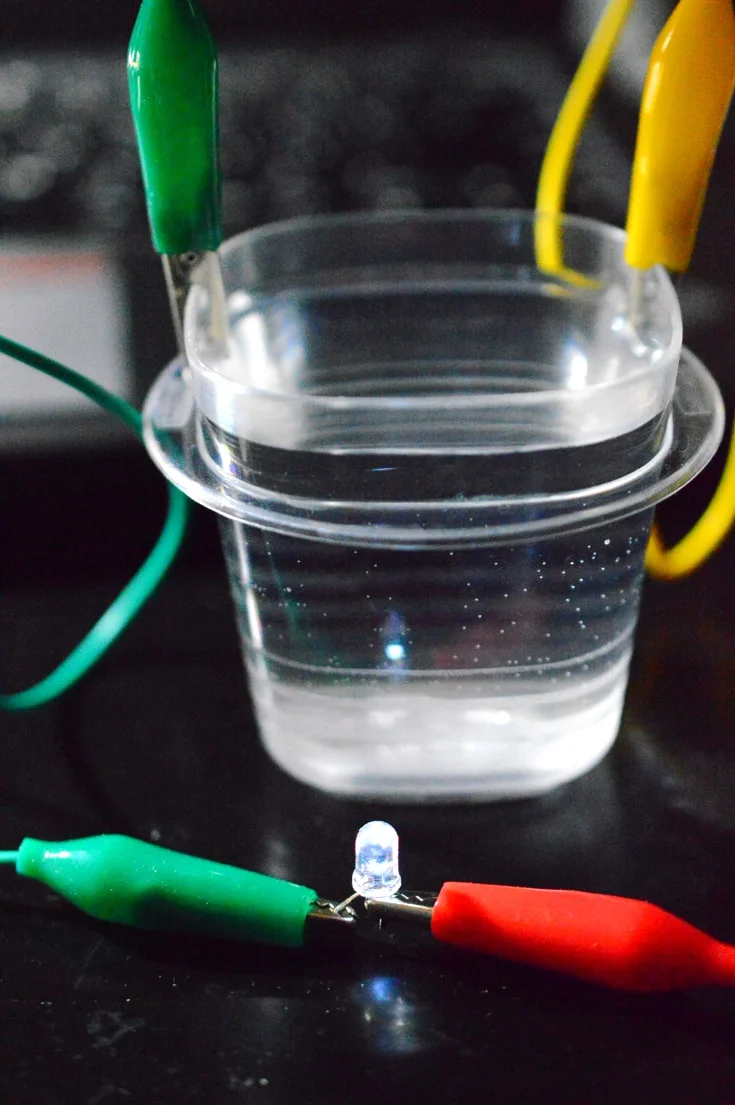
In this captivating activity, students will explore the conductive properties of water and unlock the secrets of how electrical currents flow through different substances.
Learn more: Rookie Parenting
8. Roller Coaster Stem Experiment
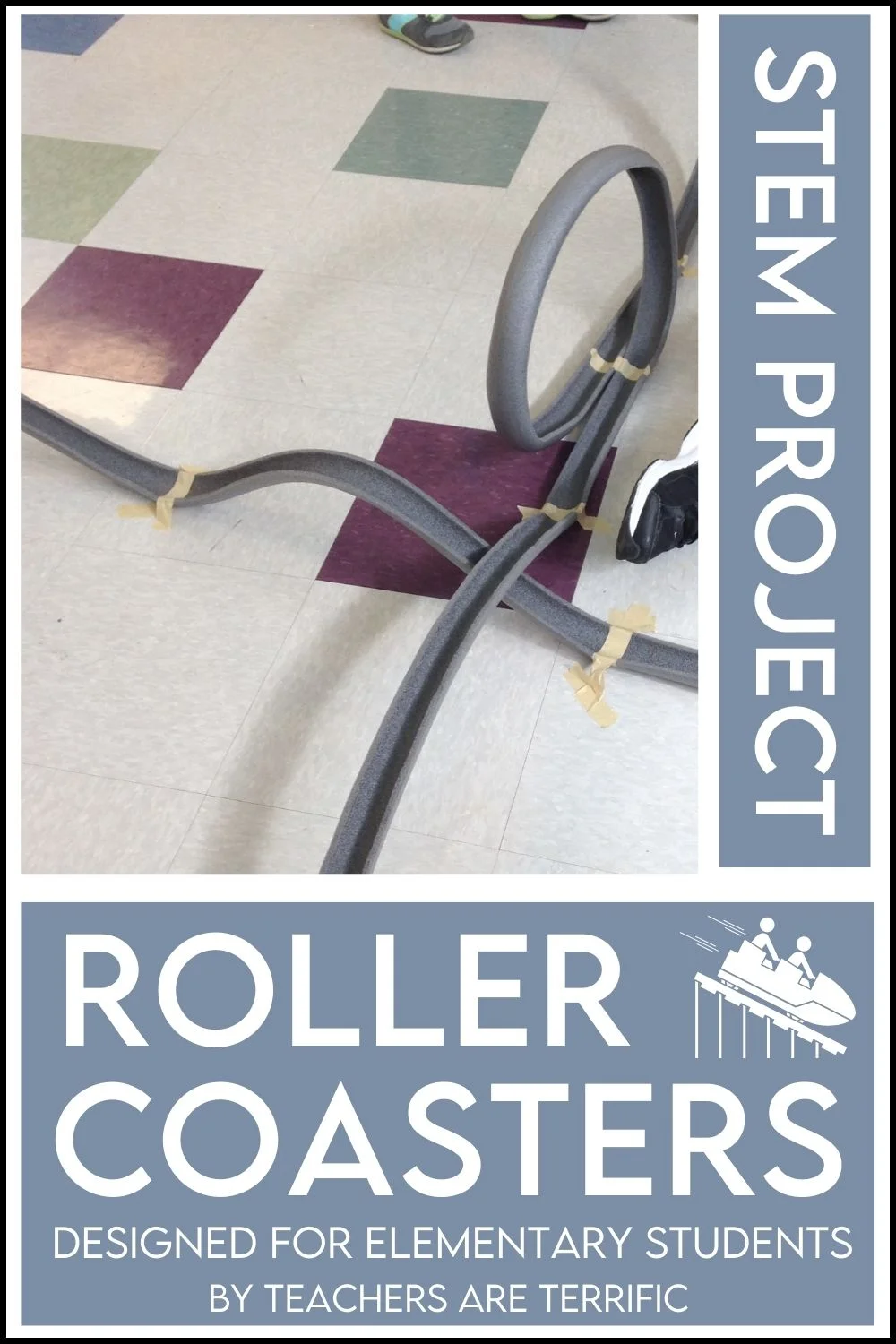
By experimenting with various designs and track configurations, students will refine their problem-solving skills and gain valuable insights into the practical applications of physics and engineering.
Learn more: STEM Project
9. Lemon Battery
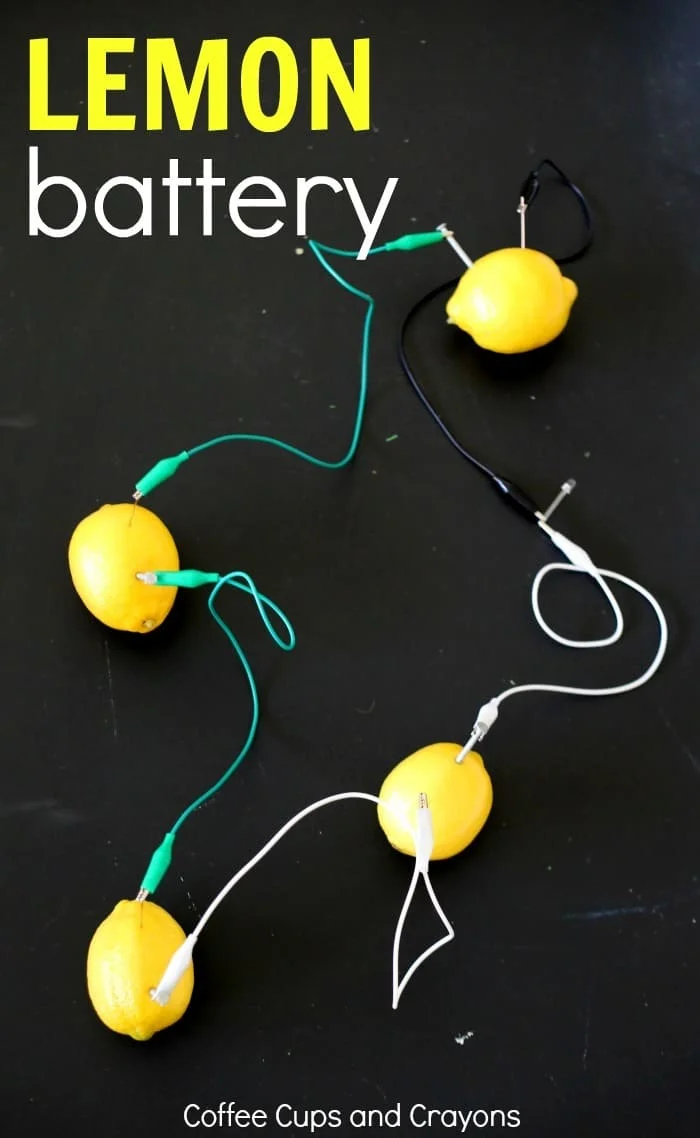
Engaging in this experiment not only teaches the basics of electrical circuits but also sparks curiosity about the natural world and the science behind it.
Learn more: Coffee Cups and Crayons
10. Watering Plants Using Different Liquids
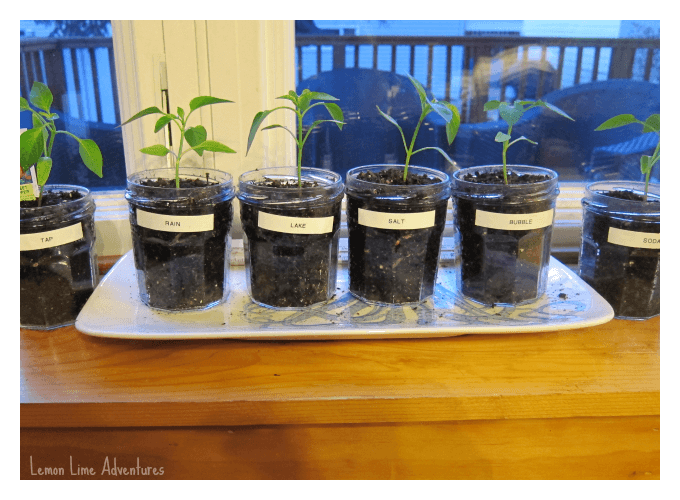
Discover the wonders of plant hydration with the intriguing high school science experiment – “Watering Plants Using Different Liquids.” In this captivating project, students explore how various liquids impact plant growth and health.
Learn more: Lemon Lime Adventures
11. Measure Electrolytes Found in Sports Drinks
By conducting a series of tests and analyses, students will quantify the electrolyte content present in various sports drinks.
12. Relight the Flame Without Directly Touching It
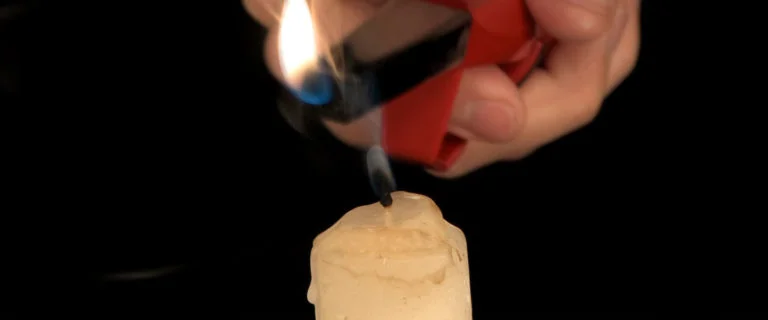
This captivating project challenges students to learn about the intriguing properties of heat transfer and combustion.
By exploring different methods to reignite a candle flame without physical contact, students will uncover the secrets of heat conduction, convection, and radiation.
Learn more: Stevespangler
13. Conduct Fingerprint Analysis
This captivating project immerses students in the intriguing world of crime scene investigations, where they will uncover the uniqueness of fingerprints and their role in forensic science.
14. Separate Water Into Hydrogen And Oxygen Using Electrolysis
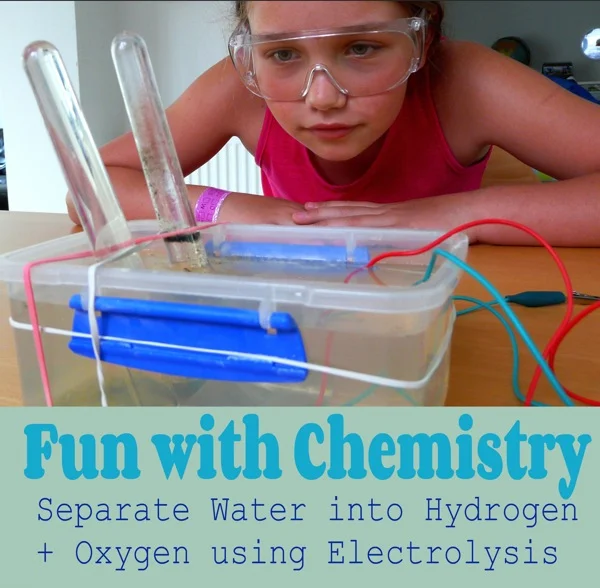
This electrifying project allows students to explore electrolysis and the decomposition of water into its elemental components.
Learn more: Navigating by Joy
15. Simple Color Detection Circuit
This experiment not only introduces fundamental concepts in electronics and circuitry but also opens up endless possibilities for real-life applications, from automated sorting systems to color-sensitive devices.
16. Carbon Sugar Snake
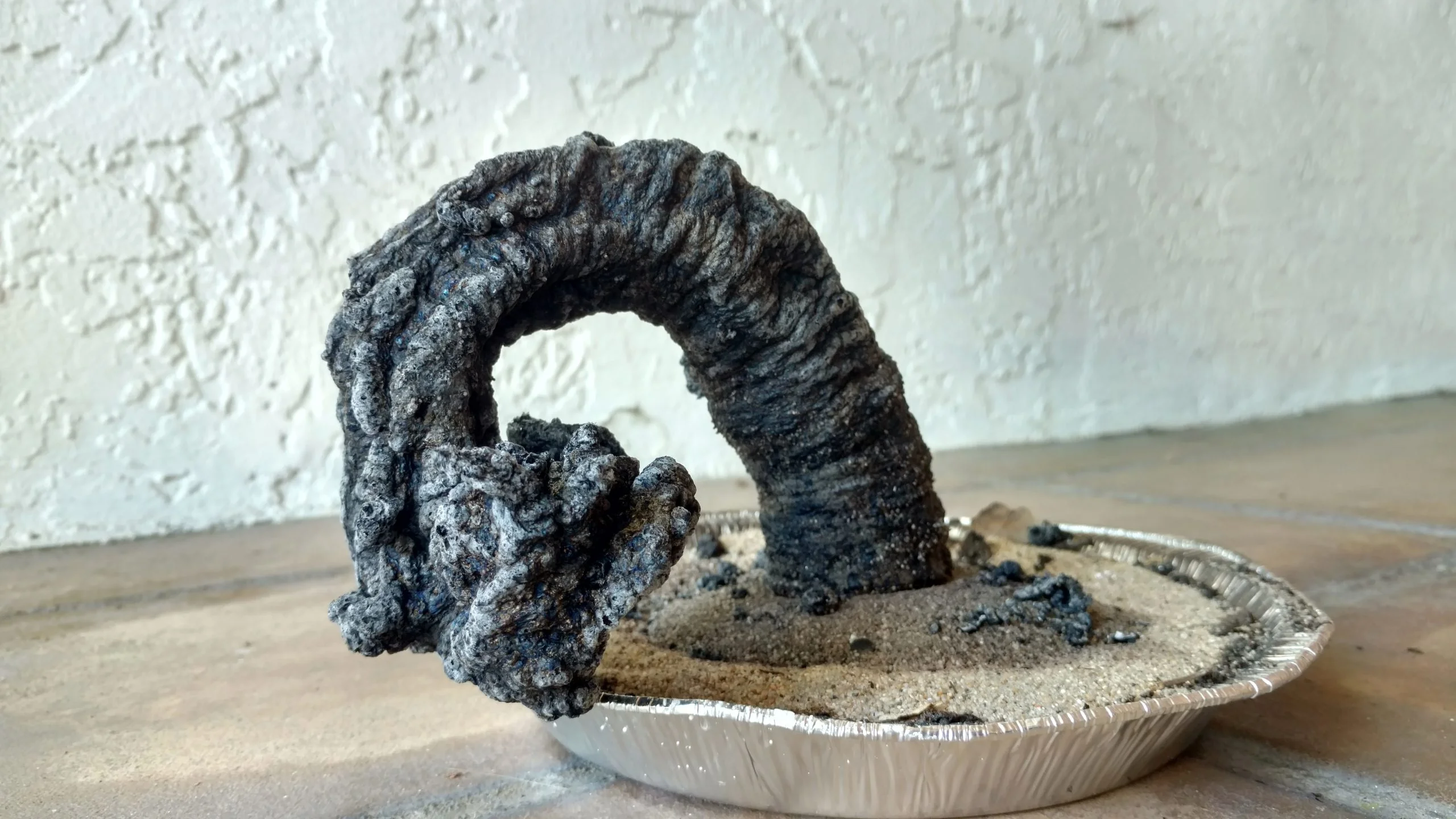
This enchanting project allows students to witness a dazzling display of science as they combine common household ingredients to create a dark, coiling “snake” made of carbon.
Learn more: Kiwi Co
17. Build a Hydraulic Elevator
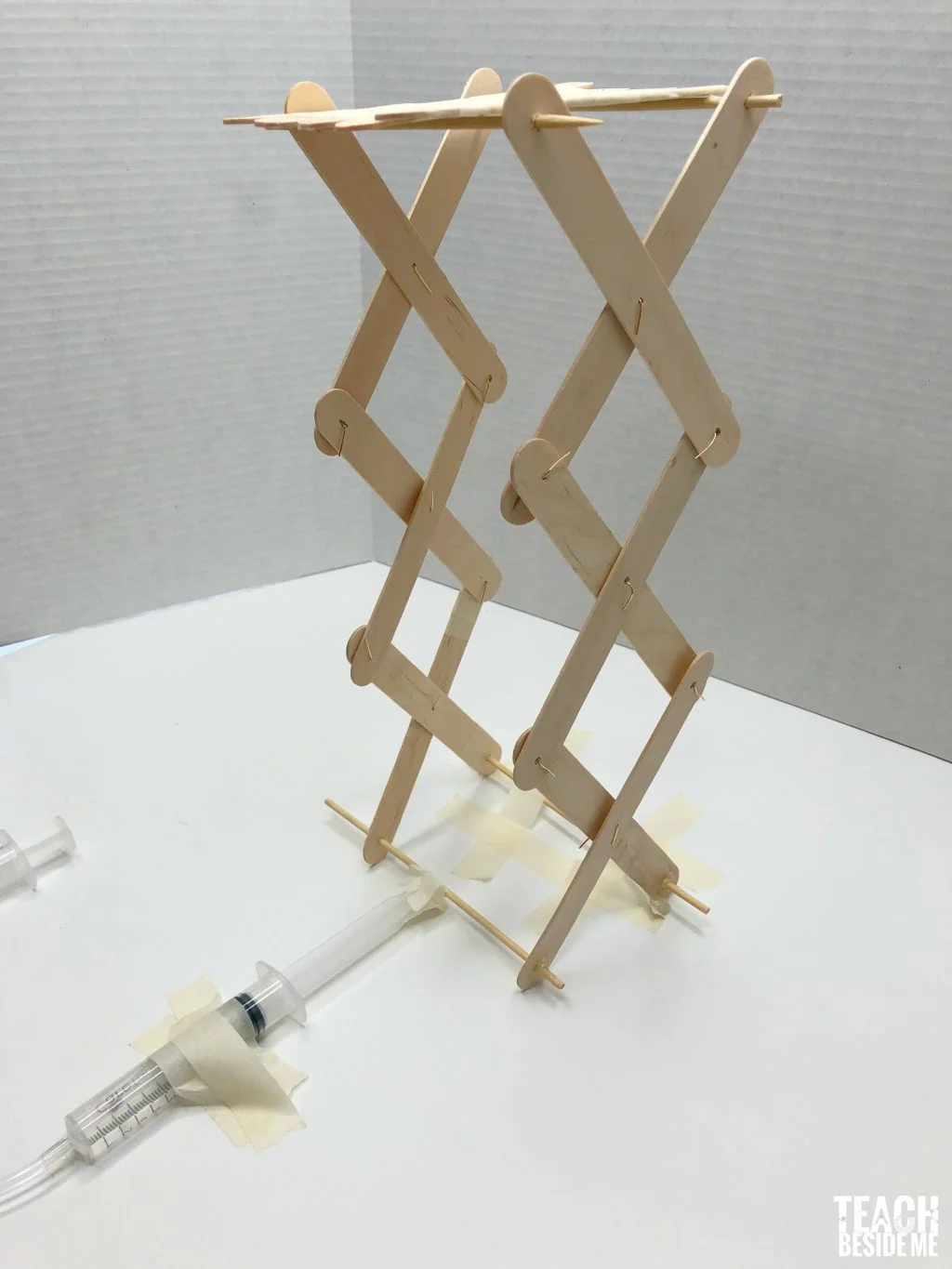
This captivating project invites students to learn about engineering and fluid mechanics. By constructing a working model of a hydraulic elevator, students will explore the principles of Pascal’s law and the fascinating concept of fluid pressure.
Learn more: Teach Beside Me
18. Brew up Some Root Beer
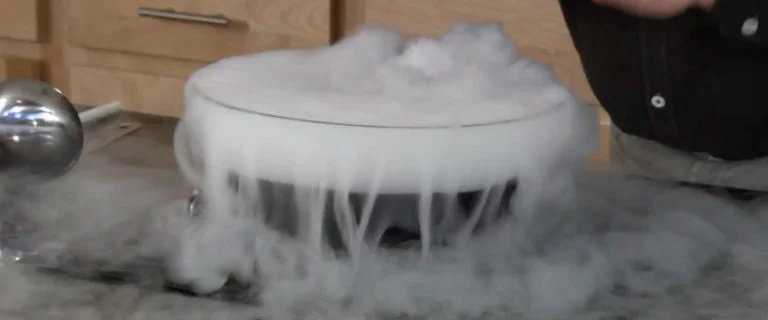
This enticing project invites students to explore the fascinating world of chemistry and fermentation while creating their own delicious and bubbly concoction.
Learn more: Home School Creations
19. Extracting Bismuth From Pepto-Bismol Tablets
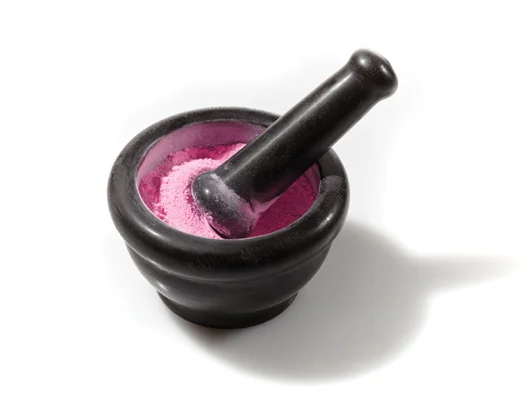
This hands-on experiment not only sheds light on the principles of chemistry and lab techniques but also highlights the real-world applications of bismuth in medicine and various industries.
Learn more: Popscie
20. Solar-Powered Water Desalination
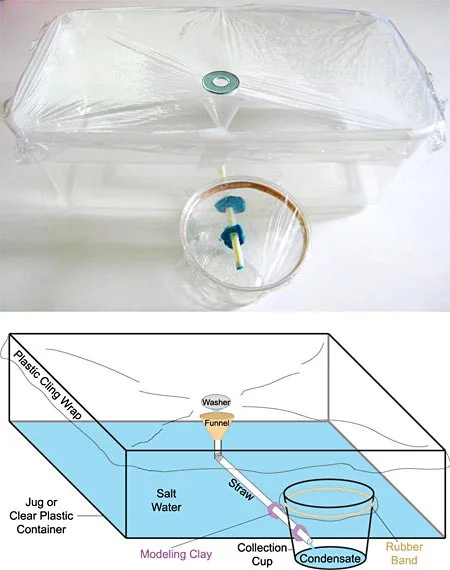
By designing and building a solar-powered water desalination system, students will learn how to harness the sun’s energy to purify saltwater and make it safe for consumption.
21. Applying Hooke’s Law: Make Your Own Spring Scale
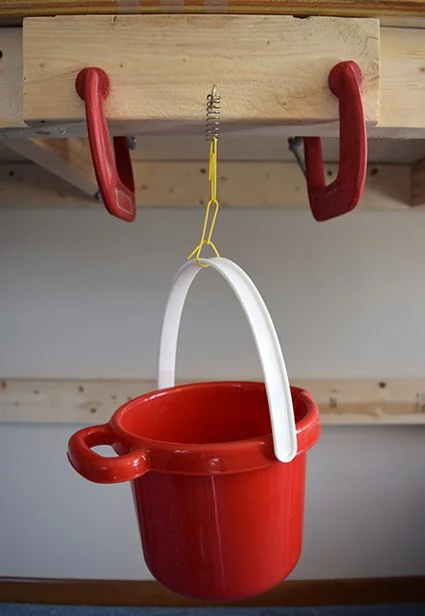
By designing and constructing their very own spring scale, students will uncover the principles of Hooke’s Law and the relationship between force and displacement in a spring system.
22. Homemade Hand Warmer
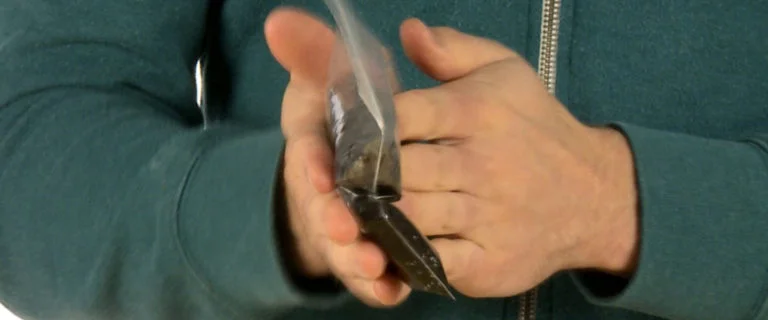
By creating their own hand warmers using safe and easily accessible materials, students will witness the magic of heat generation through chemical processes.
Learn more: Steve Spangler
23. Explore the Concept of Symbiosis Involving Nitrogen-Fixing Bacteria.
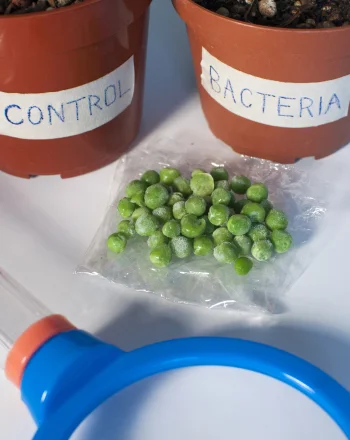
By investigating how certain plants form a mutually beneficial bond with these bacteria, students will gain insights into the essential role of nitrogen fixation in the ecosystem.
Learn more: Education.com
24. Center of Gravity Experiment
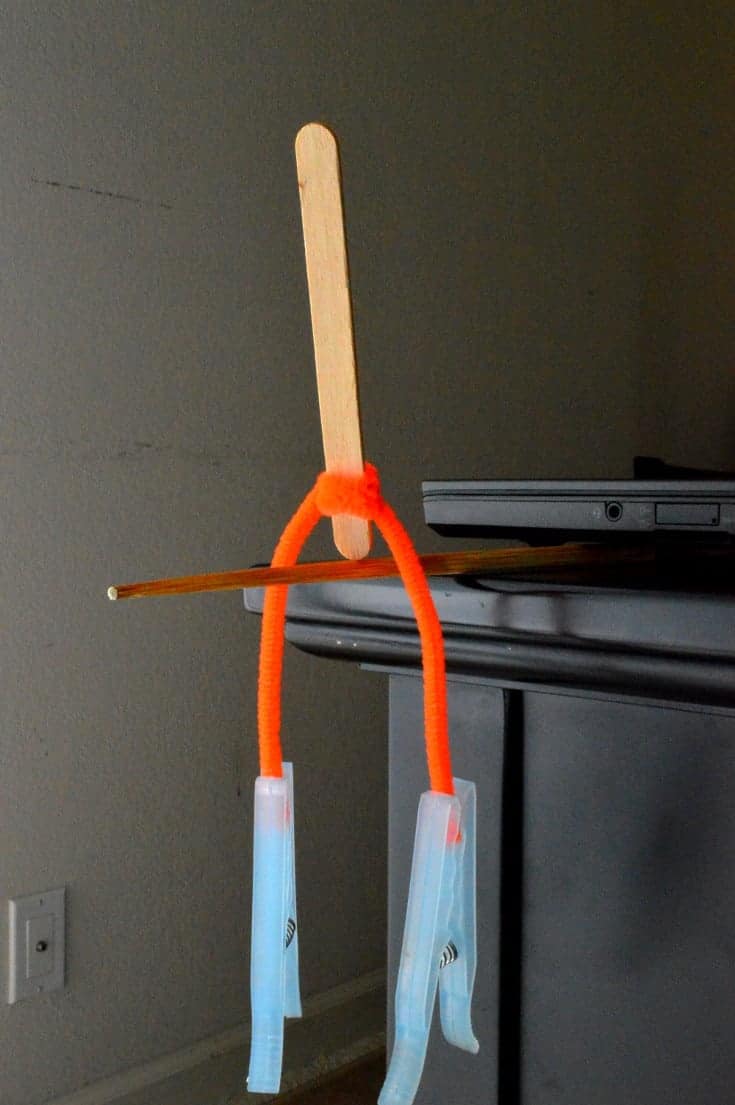
This fascinating project invites students to explore the concept of the center of gravity and its role in determining stability.
25. Power up Homemade Batteries
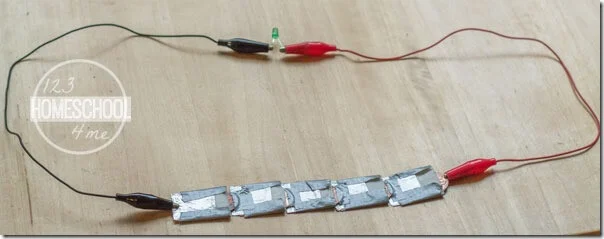
This captivating project invites students to learn about electrochemistry and energy generation.
Learn more: 123 Homeschool
26. Film Canister Explosions
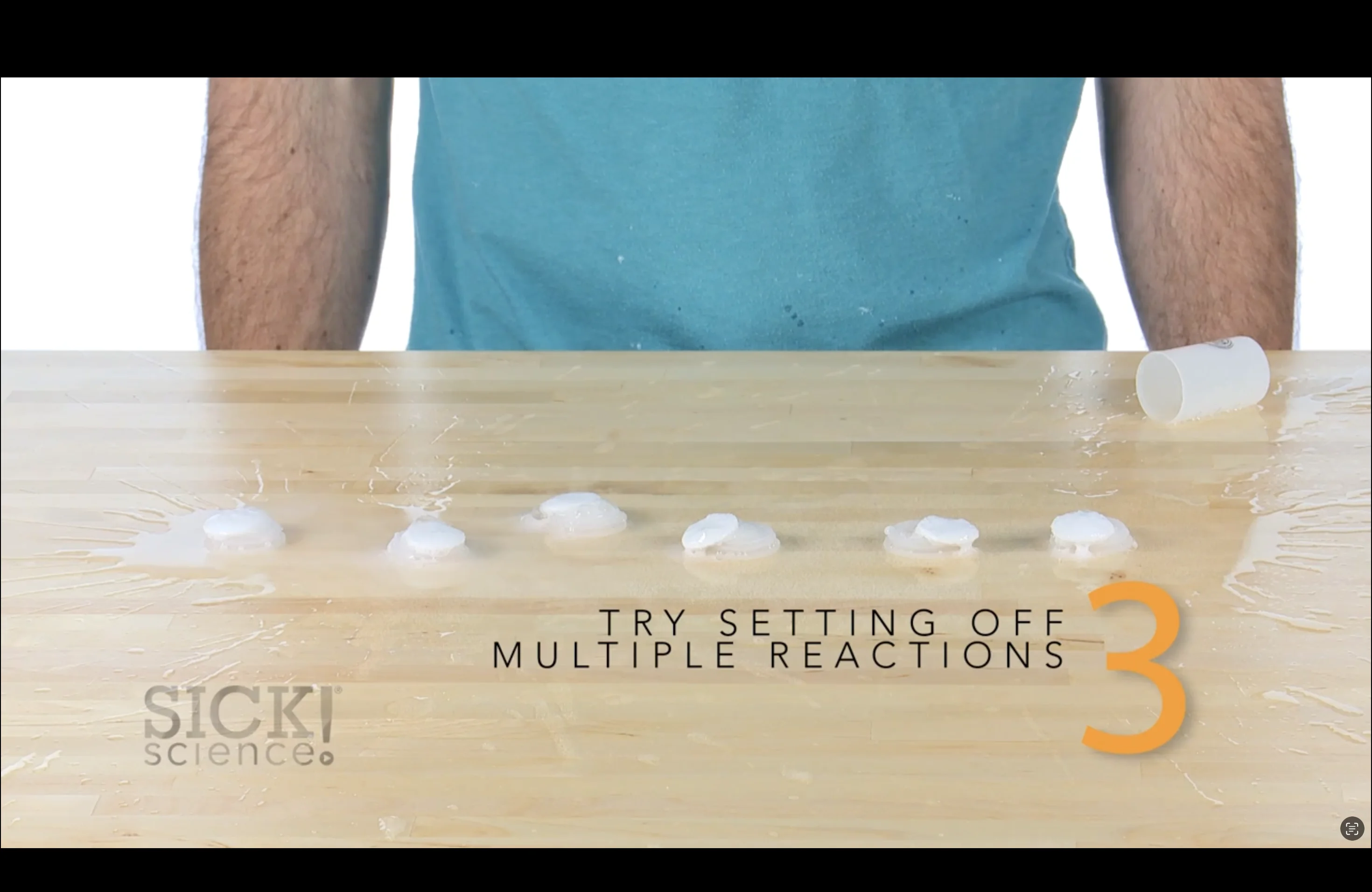
Prepare for a blast of excitement and chemistry with the high school science experiment – “Film Canister Explosions!” This project teaches students about chemical reactions and pressure build-up.
27. Investigating Osmosis with Potato Slices
This hands-on experiment not only provides a practical understanding of osmosis but also highlights its relevance in everyday life, from understanding plant hydration to food preservation techniques.
28. Make Homemade Fly Trap
This captivating “Make Homemade Fly Trap!” project invites students to explore the principles of pest control and observe the behavior of flies.
29. Hydroponics: Gardening Without Soil
This exciting project invites students to explore innovative agricultural practices that harness water and nutrient solutions to grow plants.
By setting up their hydroponic system and nurturing plants through this method, students will witness the fascinating dynamics of root development and nutrient absorption.
30. Clothespin Airplane
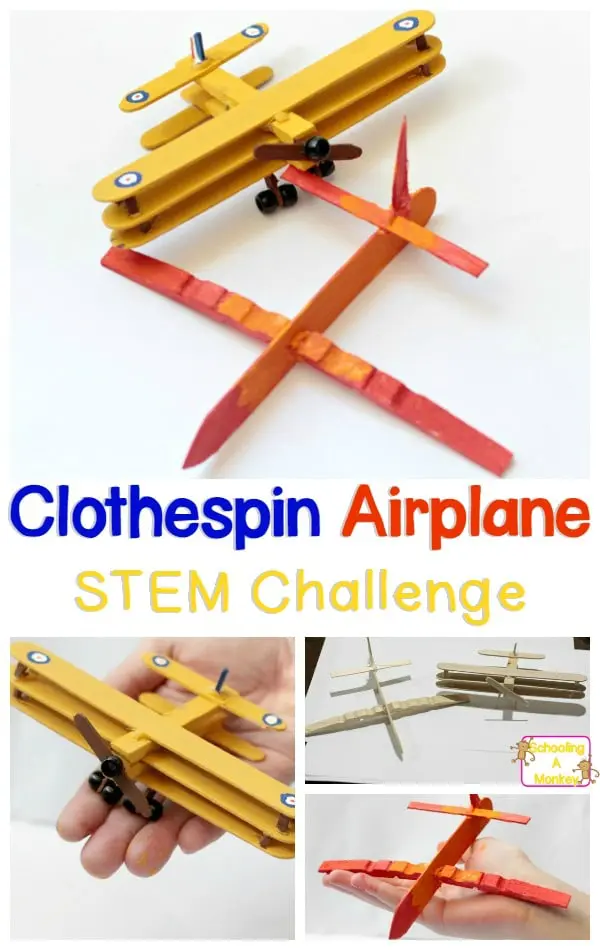
As they test and modify their creations, students will learn about the principles of lift, thrust, and drag, gaining a deeper understanding of how these forces come together to keep airplanes soaring through the skies.
Learn more: Steamsational
Similar Posts:
- 68 Best Chemistry Experiments: Learn About Chemical Reactions
- 37 Water Science Experiments: Fun & Easy
- Guide on College and University Admissions
Leave a Comment Cancel reply
Save my name and email in this browser for the next time I comment.

Chemistry Science Fair Projects: Winning Projects to Impress the Judges
- January 22, 2023
- Science Fair Ideas
Get ready to impress and inspire as you discover the true potential of Chemistry Science Fair Projects.
In this guide, we’ll provide you with winning ideas and topics that will wow the judges and give you the competitive edge you need to take home the prize.
From exploring the properties of chemical reactions to uncovering the mysteries of the periodic table, these projects will showcase your knowledge and skills in the field of Chemistry.

Table Of Contents
Chemistry science fair projects for middle school, chemistry science fair projects for 5th grade, chemistry science fair projects for 6th grade, chemistry science fair projects for 7th grade, chemistry science fair projects for 8th grade, chemistry science fair projects for high school, chemistry science fair projects for 9th grade, chemistry science fair projects for 10th grade, chemistry science fair projects for 11th grade, chemistry science fair projects for 12th grade, chemistry science fair projects – college level, award winning chemistry science fair projects.
Here is the list of our science fair projects designed specifically for middle school students to make them learn chemistry with fun!

- Finding out the saturation point of the sugar solution
- Making sugar crystals from water and granulated sugar
- Creating invisible ink from lemon juice
- Affect of acid on the corrosion rate
- Walking water experiment with colors
- Turning milk into plastic
- How to make slime
- Making a vinegar volcano
- Eno and water experiment
- Demonstrating drinking candle
- UV color-changing slime experiment
- Creating a magnetic slime
- Dancing raisin experiment
- Making popcorn dance
- Chemical change-Burning of paper
- Process of filtration for making water safe for drinking
- Separating salt and sand from a mixture
- Creating fizzing bath bombs
- Reacting sugar with sulphuric acid
- Putting an egg into a bottle
- Finding the fabric that can be the best insulator
- Egg and Toothpaste experiment
- Finding out which water is hardest and which is softest
- Demonstrating a chemical reaction producing heat (yeast + hydrogen peroxide)
- Exploding lunch bag experiment
- Change of color in iodine
- Making popping balls out of fruit juice
- Natural dyed easter eggs
- Making a lava lamp
- Create a self-inflating balloon
- Creating a density rainbow jar
- Creating dancing rice with vinegar and baking soda
- Smoking fingers with white phosphorous
- Making a silver egg
- Making colored jelly crystals
- Electrolysis of water experiment
- Baking soda heating experiment
- Softening temporary hard water
- Acid-base indicator experiment
- Make Rainbow Rubber Eggs (Naked Egg Experiment)
- Stimulating acid rain
- The copper coin experiment
- Making fruit batteries
Below is a list of our chemistry science fair projects that demands a higher level of thought process and may need adequate safety measures for flawless execution.

- Making elephant toothpaste
- Instant change of liquid colour with caustic soda, water and glucose
- Dissolving thermocol in a mixture of petrol water
- Making homemade snow with sodium polyacrylate,vinegar and water
- Green flame experiment
- Distillation of water experiment
- Creating a pressure bottle rocket
- Making fingerprints glow
- 7 layered density column
- Grow salt crystals at home
- Make Crystal Egg Shells
- Comparison of the amount of electrolytes in orange juice vs sports drinks
- How addition of salt or sugar impact the freezing point of water
- Create a chemical clock with organic dyes
- Effect of dye on various fabrics
- Determining the pH value of tea
- Turning a colorless liquid into gold
- Making fog using dry ice
- Bleeding knife experiment
- Making a crystal snowflake with borax
- Making disappearing ink
- Turning water into blood
- Paper currency burning experiment
- Comparing the pH value of milk, vinegar, and orange juice
- Extracting caffeine from several samples of tea
- Create a glowing density tower
- Freezing point depression experiment
- Determining which one has the highest boiling point
- Effect of impurities on the freezing point of a liquid
- Rate of evaporation differs in different liquids
- Using a black light for detecting invisible spills
- Finding the percentage of water in orange by evaporation
- Creating a chemical traffic light
- Carbon snake experiment with sugar and sulphuric acid
- Making snakes by burning calcium tablets
- Testing different water purification techniques
- Making an electrochemical cell
- Creating heat-sensitive slime
- Making crystal wind chimes
- Instant ice experiment
- Demonstrating the destructive power of vinegar

- Mixing Coco-Cola and mentos
- Ammonia absorbing experiment
- Testing tap water vs mineral bottled water
- Proving plastic wrap prevents oxidation
- Cleaning silver instantly
- Rainbow of flames using different compounds
- Burning magnesium in dry ice
- Mercury beating like a heart
- Thermite reaction
- Dancing gummy bear experiment
- Determination of whether food items are adulterated or not
It is true that some chemistry projects at science fairs are extremely innovative and end up winning awards. Here, have a look at some of such award-winning science fair projects that may inspire and excite you or may instil a newfound love for chemistry.

- Removing permanent marker stains from cloths
- Removing graffiti from wood and metal
- Finding which one is stronger- plexiglass or glass
- Creating a biodegradable cleaner
- Proving ivory soap has air molecules
- Creating a basic cold pack with salt and water
- Demonstrating the effect of moisture on crystal growth
- Heat of reaction (Calorimetry)
- Determining the hardness of water by soap bubbles
- Making bioplastic with kitchen materials

Leave a Reply Cancel Reply
Your email address will not be published. Required fields are marked *
Name *
Email *
Add Comment *
Save my name, email, and website in this browser for the next time I comment.
Post Comment
- Earth Science
- Physics & Engineering
- Science Kits
- Microscopes
- Science Curriculum and Kits
- About Home Science Tools
Resource Center Home > Science Projects > Science Fair Projects > Chemistry Science Fair Projects
Chemistry Science Fair Projects
Get ideas for your own chemistry science fair project: experiment with dissolving egg shells, create reacting mixtures, conduct pH tests, and more.

Learn about acids and bases by making pH test strips from coffee filters and the juice from boiled red cabbage.

Try this experiment to see how chemistry can keep fresh fruit from turning brown.

Easy and fun kitchen science projects teach about chemistry and more!

Discover the science of crystals and grow two different types of beautiful crystals!

Demonstrate the sticking power of germs and the necessity of good hand washing techniques!

Split water into hydrogen and oxygen gas using two pencils and a battery in this fun electrolysis science project!

Experiment with bacteria cultures grown with agar and petri dishes with complete step-by-step instructions.

Do this spinoff of the elephant toothpaste experiment using household items like yeast and hydrogen peroxide.
The Tech Edvocate
- Advertisement
- Home Page Five (No Sidebar)
- Home Page Four
- Home Page Three
- Home Page Two
- Icons [No Sidebar]
- Left Sidbear Page
- Lynch Educational Consulting
- My Speaking Page
- Newsletter Sign Up Confirmation
- Newsletter Unsubscription
- Page Example
- Privacy Policy
- Protected Content
- Request a Product Review
- Shortcodes Examples
- Terms and Conditions
- The Edvocate
- The Tech Edvocate Product Guide
- Write For Us
- Dr. Lynch’s Personal Website
- The Edvocate Podcast
- Assistive Technology
- Child Development Tech
- Early Childhood & K-12 EdTech
- EdTech Futures
- EdTech News
- EdTech Policy & Reform
- EdTech Startups & Businesses
- Higher Education EdTech
- Online Learning & eLearning
- Parent & Family Tech
- Personalized Learning
- Product Reviews
- Tech Edvocate Awards
- School Ratings
Best Services in St. Louis, MO-IL Metro Area
Best services in state college, pa metro area, best services in st. joseph, mo-ks metro area, a visitor’s guide to shenyang, china, a visitor’s guide to khartoum, sudan, a visitor’s guide to belo horizonte, brazil, a visitor’s guide to saint petersburg (leningrad), russia, best services in st. george, ut metro area, a visitor’s guide to pune, india, best services in stockton–lodi, ca metro area, 15 best science experiments for high school labs and science fairs.

Science fairs and high school labs are excellent opportunities for students to explore and expand their scientific knowledge. Not only do these experiences allow students to apply what they have learned in the classroom, but they also foster a passion for science and critical thinking skills. If you’re looking for some exciting and engaging science experiments to showcase at your next science fair or conduct in your high school lab, you’ve come to the right place. In this article, we will explore 15 of the best science experiments that are perfect for high school students.
1. Electrolysis of Water: Explore the process of water electrolysis and demonstrate how water can be split into hydrogen and oxygen gases.
2. Acid-Base Titration: Investigate the concept of neutralization reactions by performing acid-base titrations using different indicators.
3. Solar Cell Efficiency: Measure the efficiency of solar cells by comparing the electrical output under different light sources and angles.
4. Enzyme Activity: Study the effect of temperature and pH on enzyme activity using a common enzyme such as catalase.
5. DNA Extraction: Extract DNA from various plant or fruit samples to understand the basic principles of DNA isolation.
6. Chromatography: Separate and analyze the pigments present in plant leaves using paper or thin-layer chromatography.
7. Boyle’s Law: Observe the relationship between the volume and pressure of a fixed amount of gas at a constant temperature.
8. Projectile Motion: Investigate the factors affecting the trajectory of a projectile by launching objects at different angles and velocities.
9. Acid Rain Simulation: Create a simulated rainwater sample and investigate the effects of acid rain on different materials or organisms.
10. Diffusion and Osmosis: Study the movement of molecules across selectively permeable membranes using various solute concentrations.
11. Magnetic Levitation: Construct a simple magnetic levitation device to demonstrate the principles of magnetism and levitation.
12. Rusting Rates: Investigate the factors (such as temperature, humidity, and presence of inhibitors) that affect the rate of rust formation.
13. Respiration in Yeast: Observe the process of cellular respiration in yeast by measuring the production of carbon dioxide.
14. Newton’s Cradle: Explore the conservation of momentum and energy using Newton’s cradle, a classic physics demonstration.
15. Plant Phototropism: Investigate how plants respond to light stimuli and demonstrate phototropism using different light sources.
These 15 science experiments cover a wide range of scientific disciplines and concepts, ensuring that there is something for every high school student. Whether you’re interested in chemistry, physics, biology, or environmental science, these experiments will captivate your audience and foster curiosity about the world around us. So roll up your sleeves, gather your materials, and get ready to amaze your fellow students and teachers with these impressive science experiments. Good luck!
How to Calculate Taxable Wages
Anchor charts 101: why and how to ....
Matthew Lynch
Related articles more from author, here, boy 12 of the best dog books for kids.

Activities to Teach Students to Identify Independent and Dependent Variables in Tables and Graphs
Developing motivation, and career readiness in your students, 7 tips for creating a more gender-inclusive classroom.

Activities to Teach Students to Identify Halves, Thirds, and Fourths
20 tips, tricks and ideas for teaching gifted students.

IMAGES
COMMENTS
Uncover the inner workings of reactions, mixtures, and chemical phenomena through exciting experiments. Explore classic and cutting-edge high school science experiments in this collection of top-quality science investigations.
Mar 4, 2024 · Tweak this basic concept to create a variety of high school chemistry science fair projects. Change the temperature, surface area, pressure, and more to see how reaction rates change. Determine whether sports drinks really have more electrolytes than other beverages
Feb 6, 2024 · Physics High School Science Fair Projects and Experiments. When you think of physics science projects for high school, the first thing that comes to mind is probably the classic build-a-bridge. But there are plenty of other ways for teens to get hands-on with physics concepts. Here are some high school science experiments to try.
What are the top 10 science projects for high school? These are our top 10 science projects for high school, with projects from Biology, Chemistry, Physics and Math. These projects can be used as science fair project ideas or as a fun experiment to explore different areas of science! Jet Lag in Hamsters. Growing Pineapples. Osmosis in Eggs
In this science fair project, you will compare the size and shape of crystals grown in three different temperature conditions: room temperature, in the refrigerator, and in an ice bath. With just water and borax, a household cleaning product, you can discover the best recrystallization method for growing large, pure crystals.
May 4, 2023 · That's why we've put together a comprehensive list of over 100 high school science fair projects to inspire and guide students on their scientific journeys. From biology to chemistry, physics to earth sciences, this list includes a wide range of topics and project ideas suitable for high school students of all levels.
Apr 17, 2024 · Welcome to our round-up of top science fair projects and science experiments tailored specifically for curious high school students. Science fair is not just about the glitz and glamour of a first-place trophy; it’s about the passion, the inquiry, and the insatiable curiosity that drive every scientist, young and old. Hopefully, our curated ...
Jan 22, 2023 · Chemistry Science Fair Projects For High School Below is a list of our chemistry science fair projects that demands a higher level of thought process and may need adequate safety measures for flawless execution.
Chemistry Science Fair Projects. Get ideas for your own chemistry science fair project: experiment with dissolving egg shells, create reacting mixtures, conduct pH tests, and more.
These 15 science experiments cover a wide range of scientific disciplines and concepts, ensuring that there is something for every high school student. Whether you’re interested in chemistry, physics, biology, or environmental science, these experiments will captivate your audience and foster curiosity about the world around us.